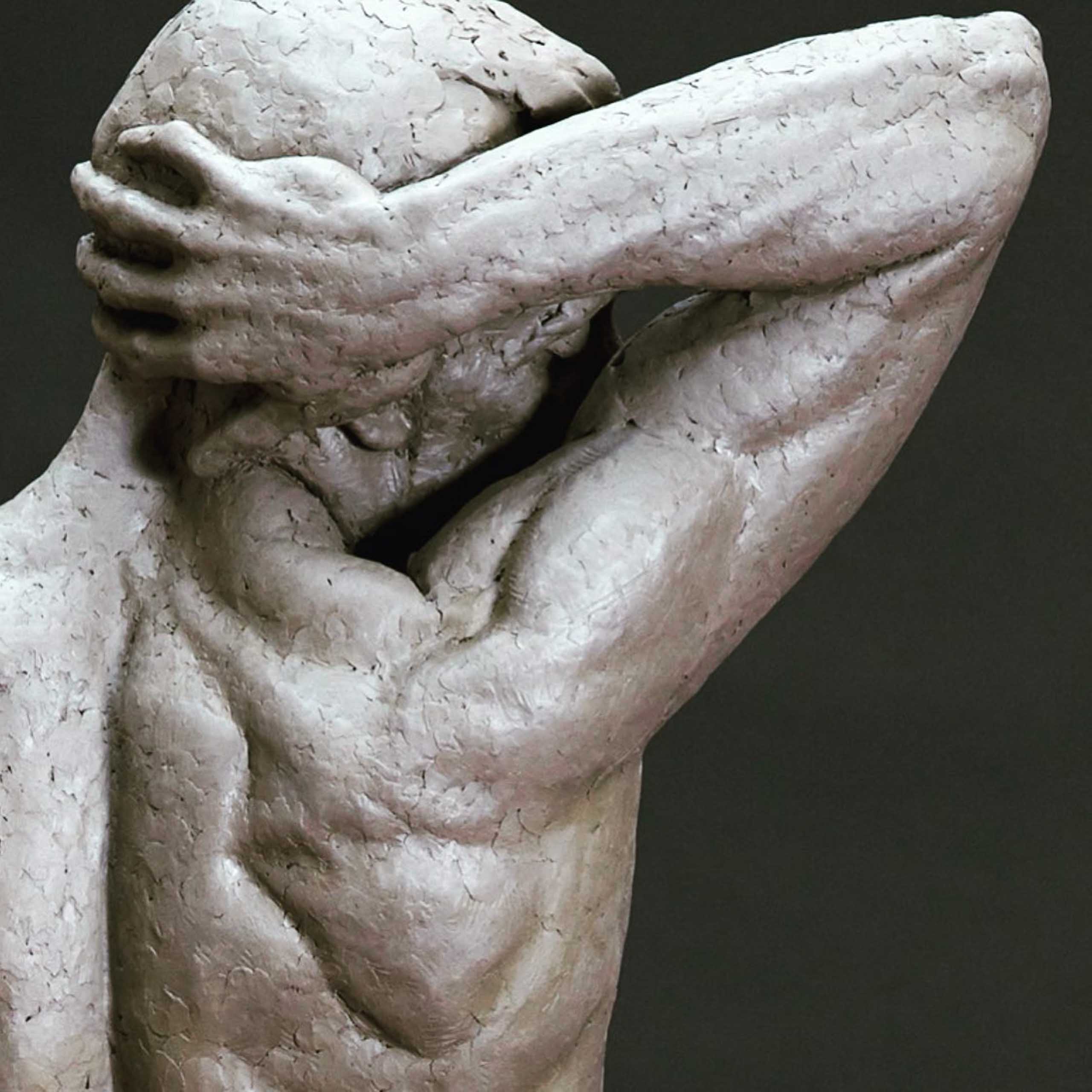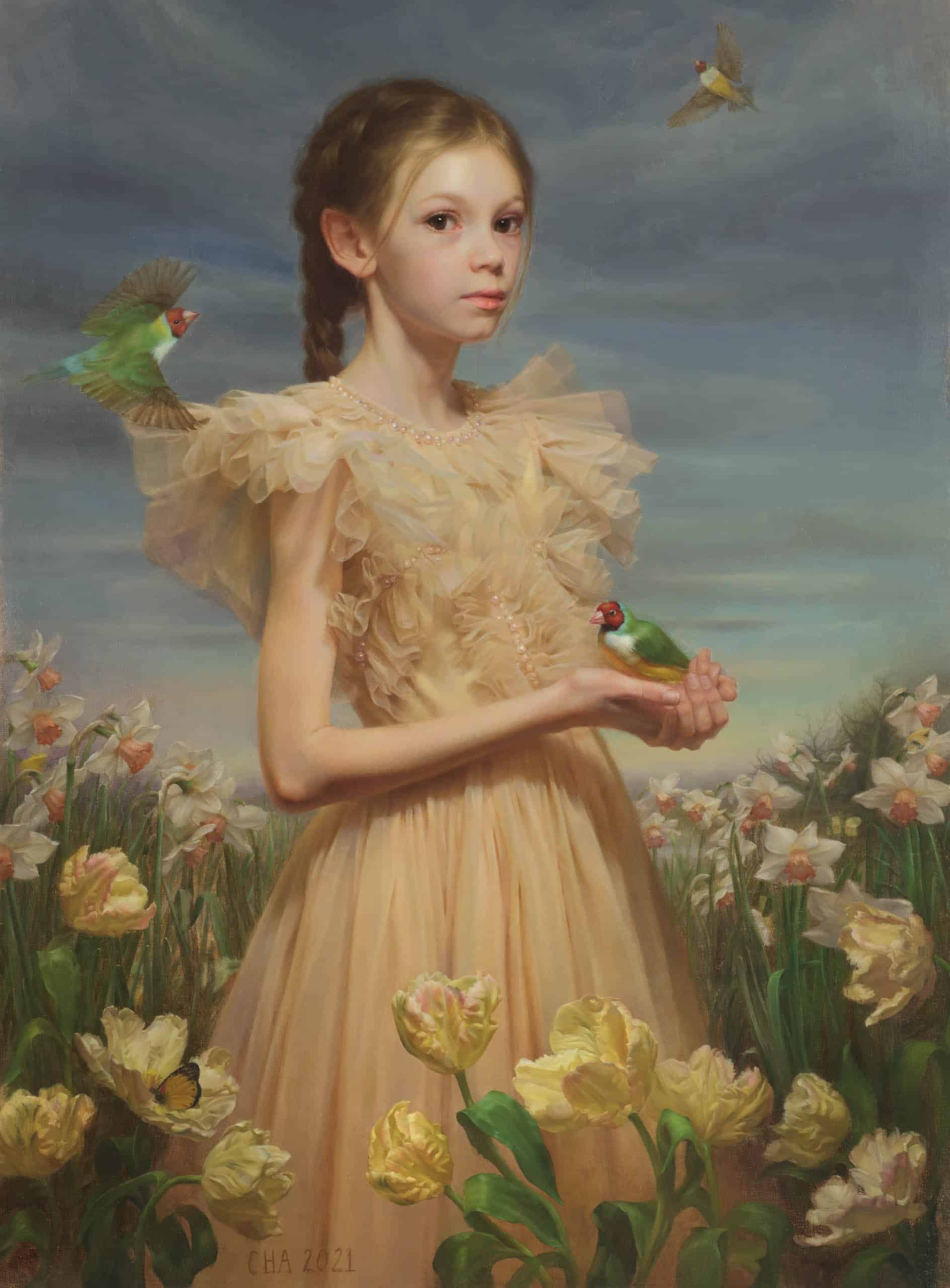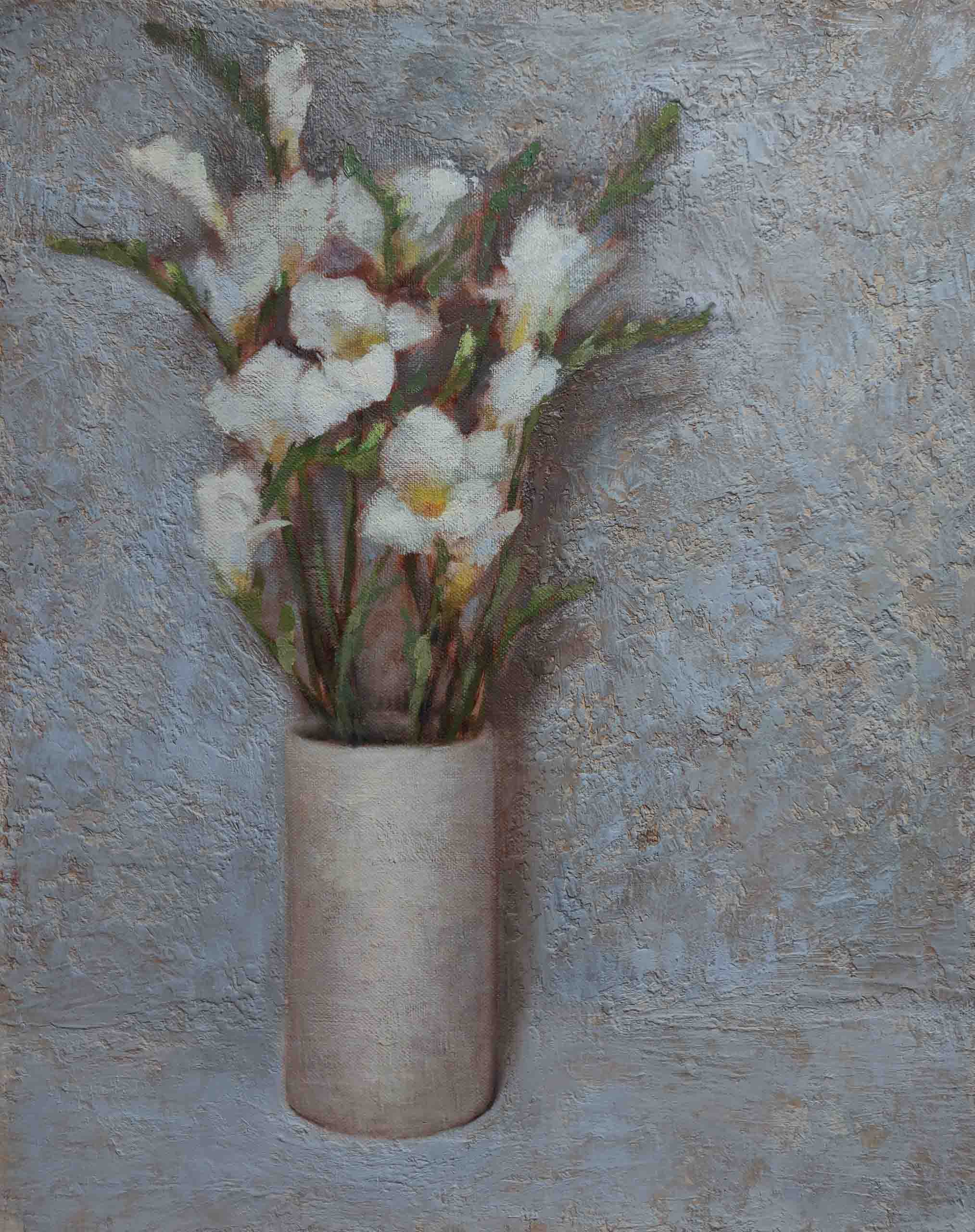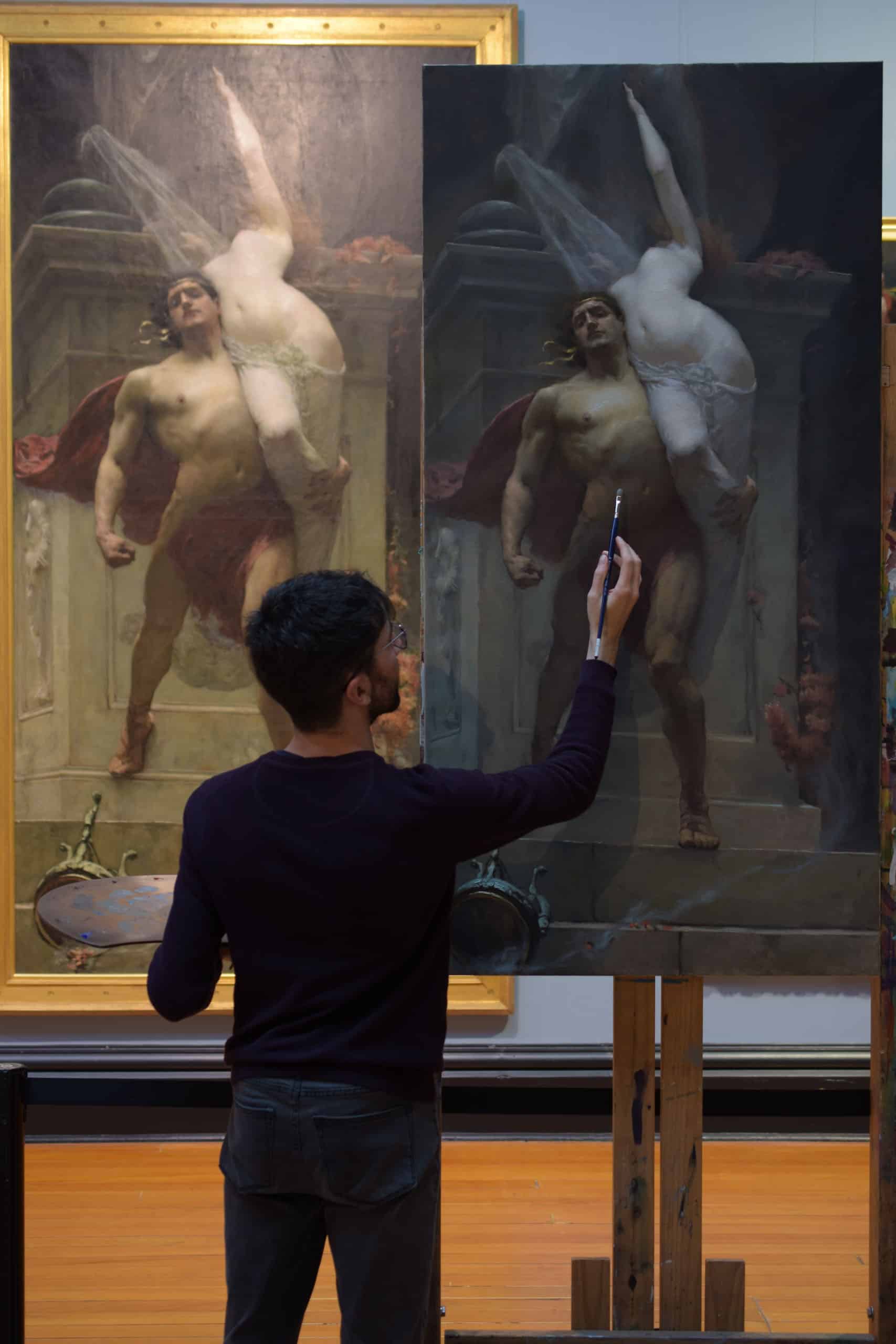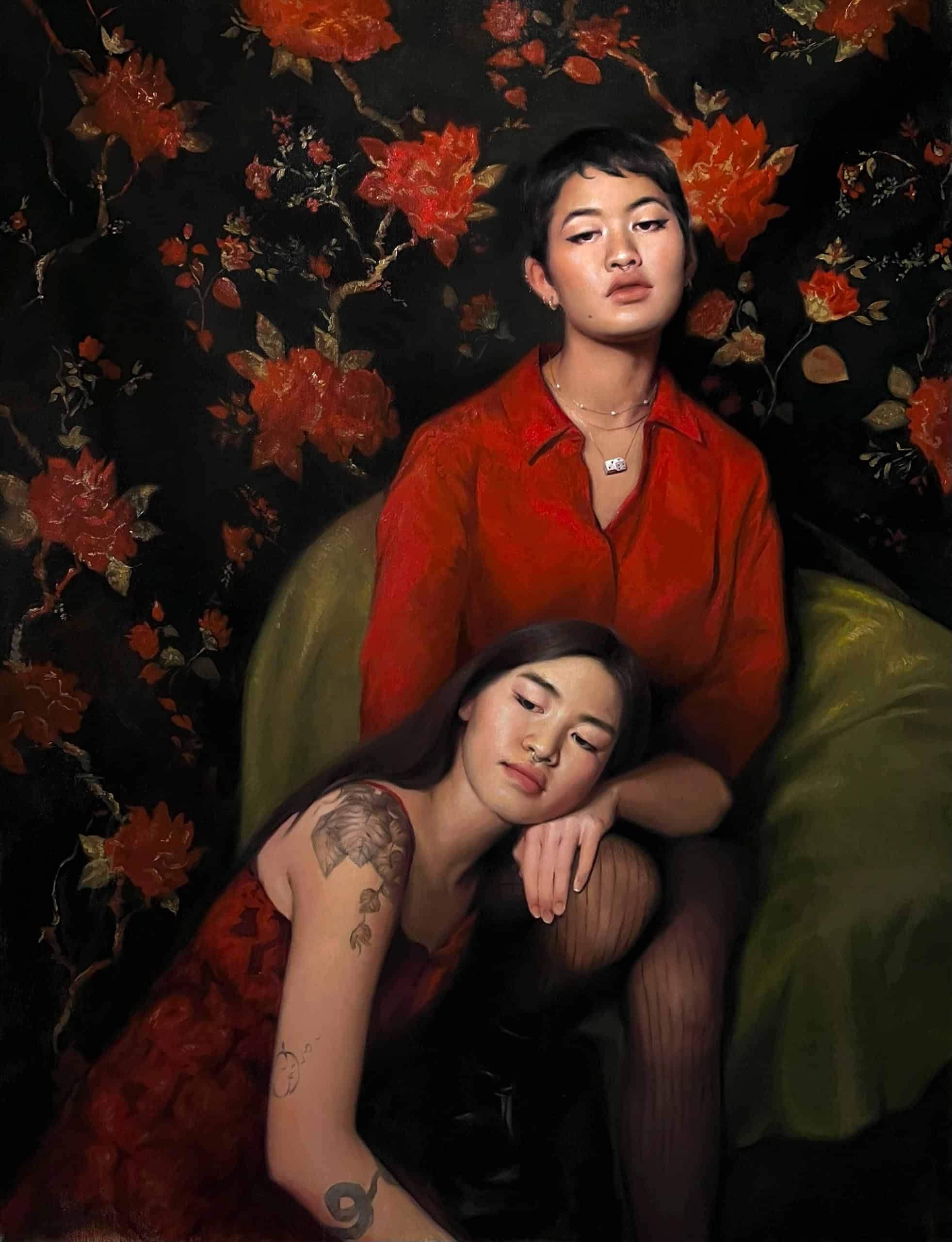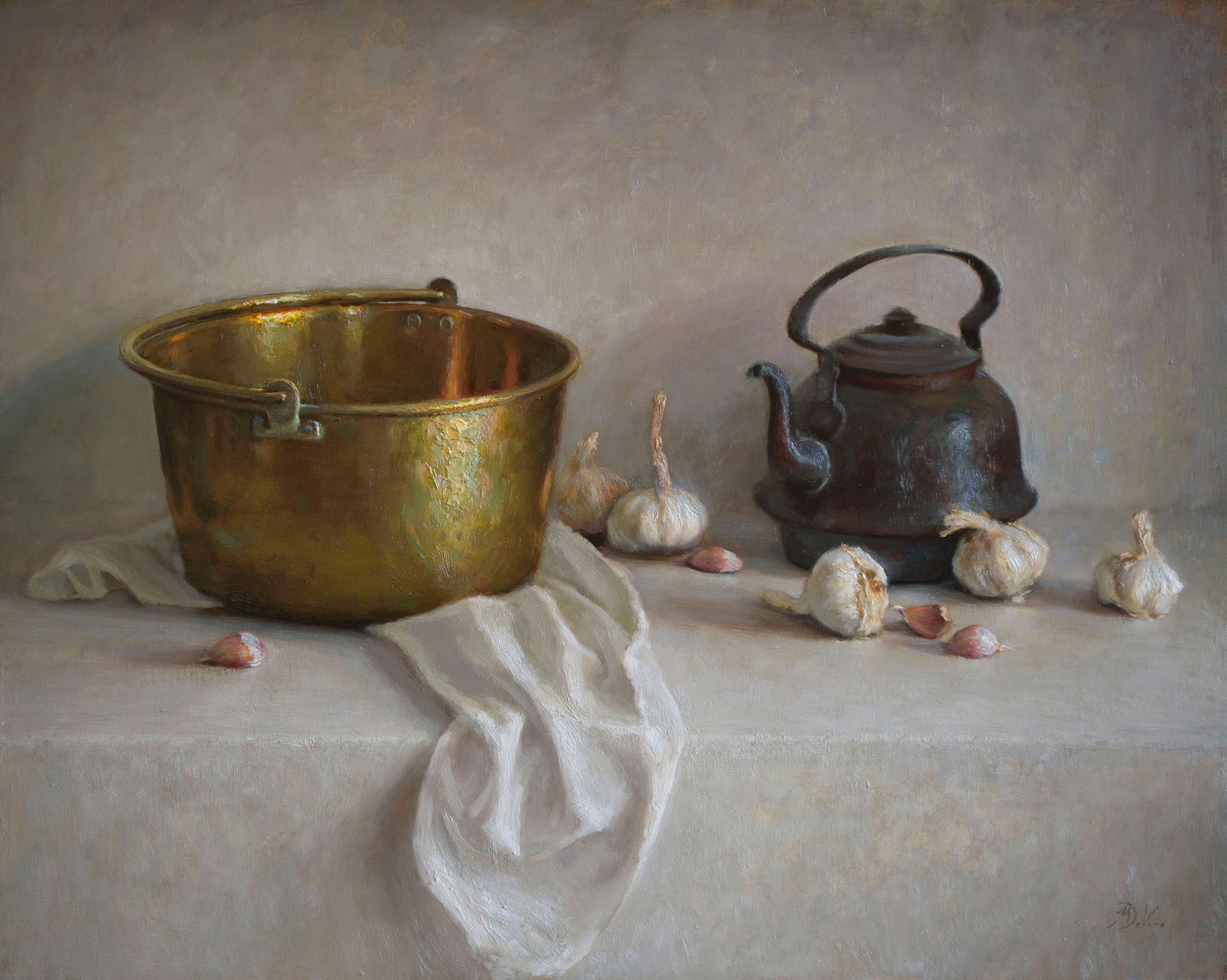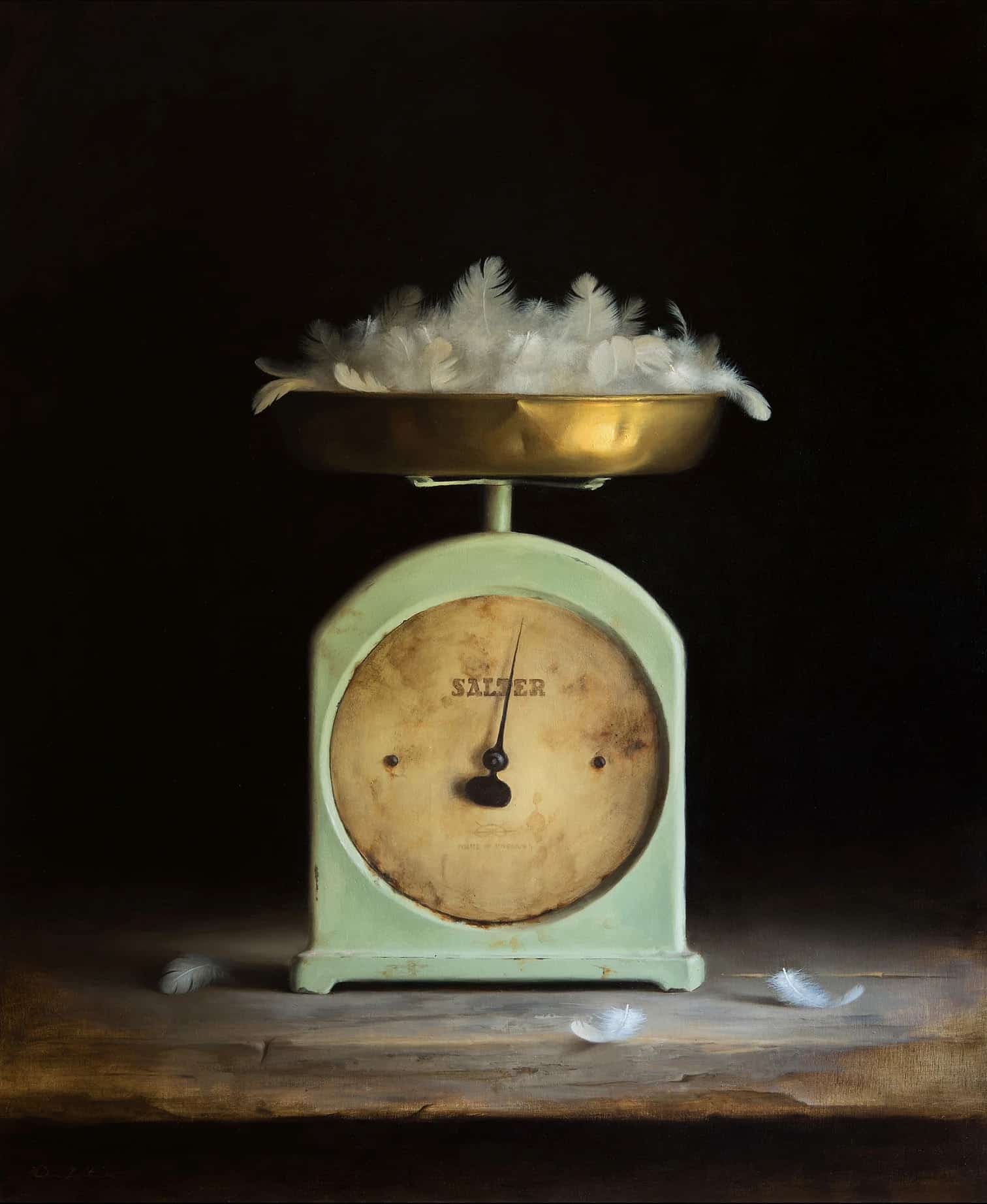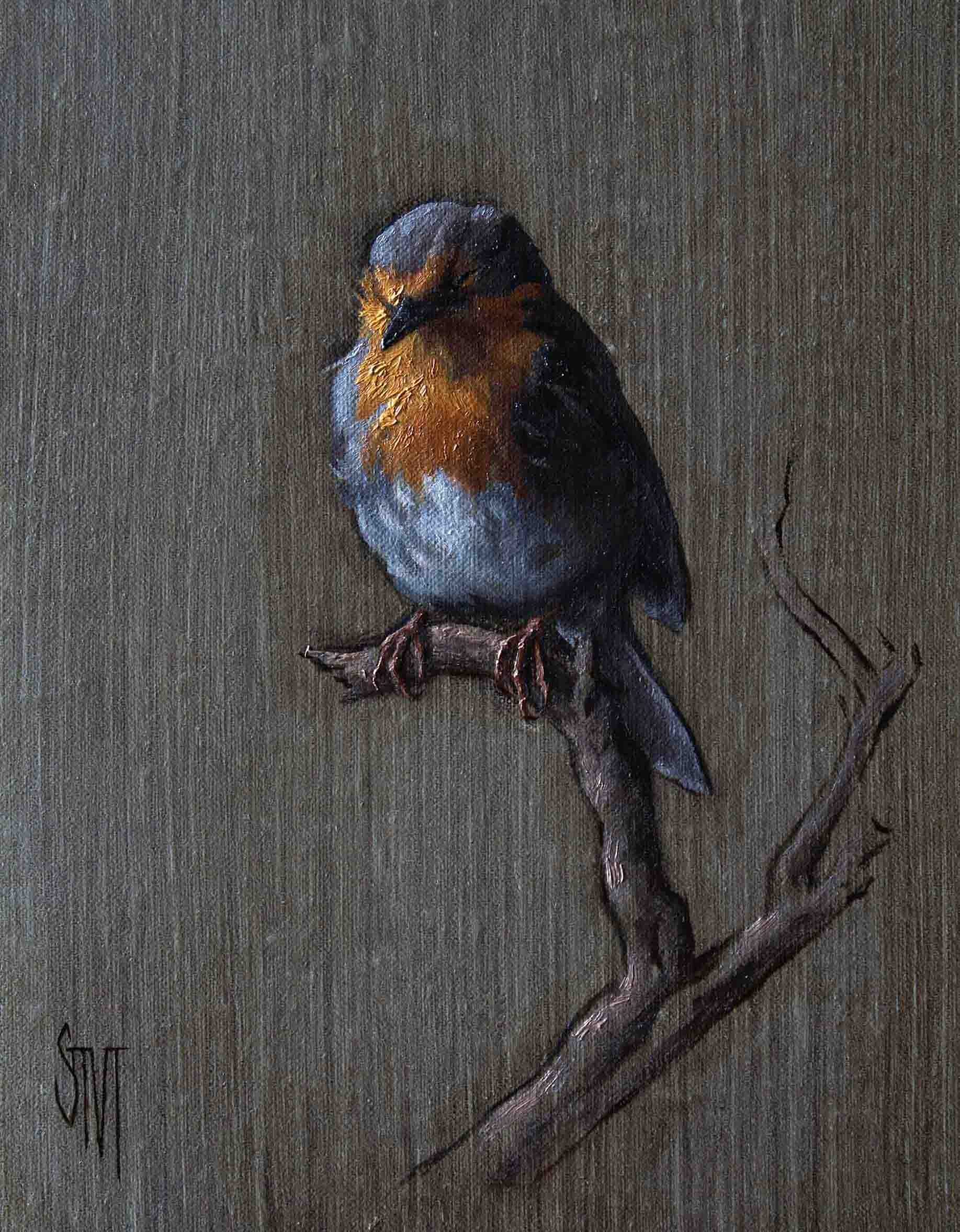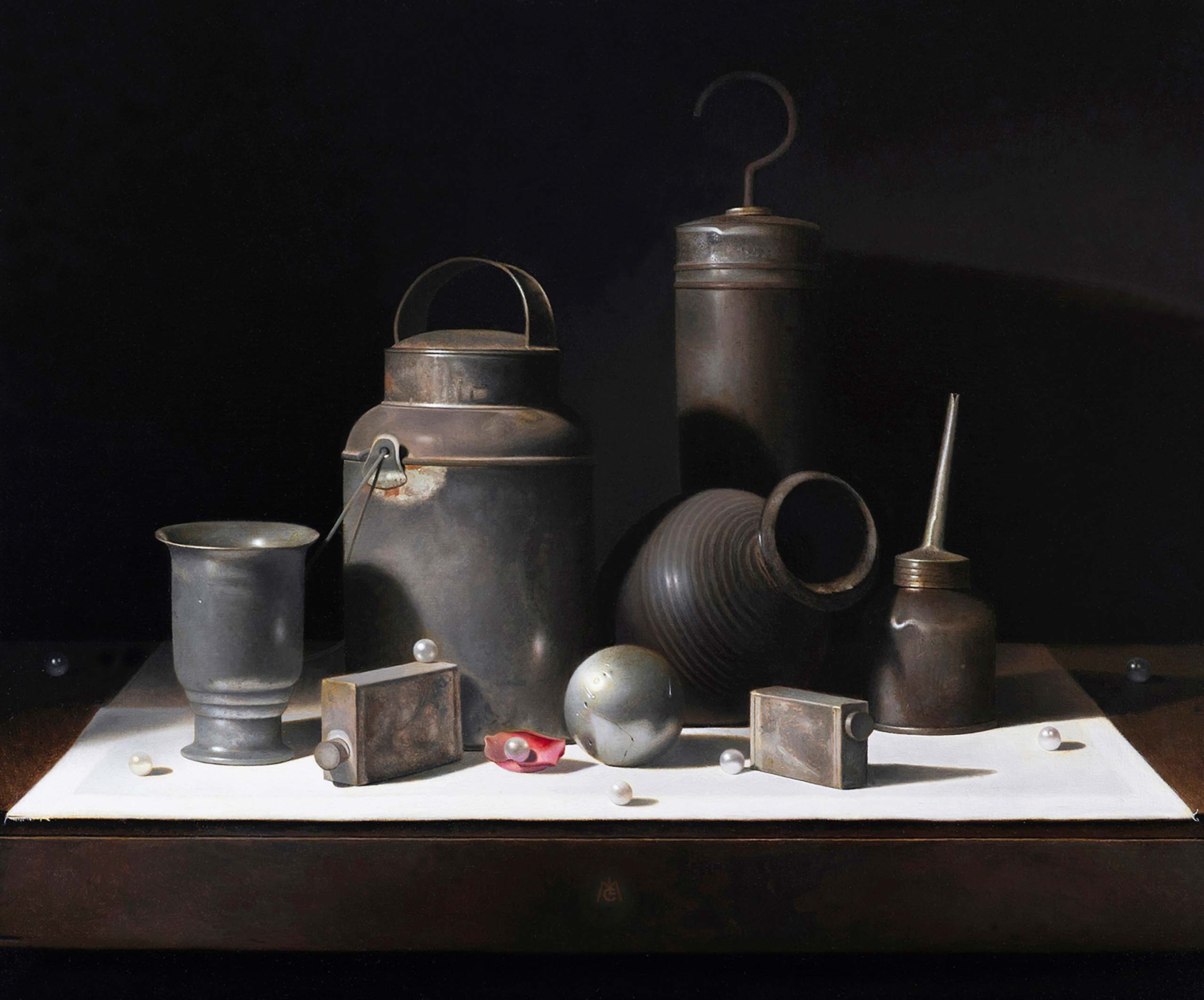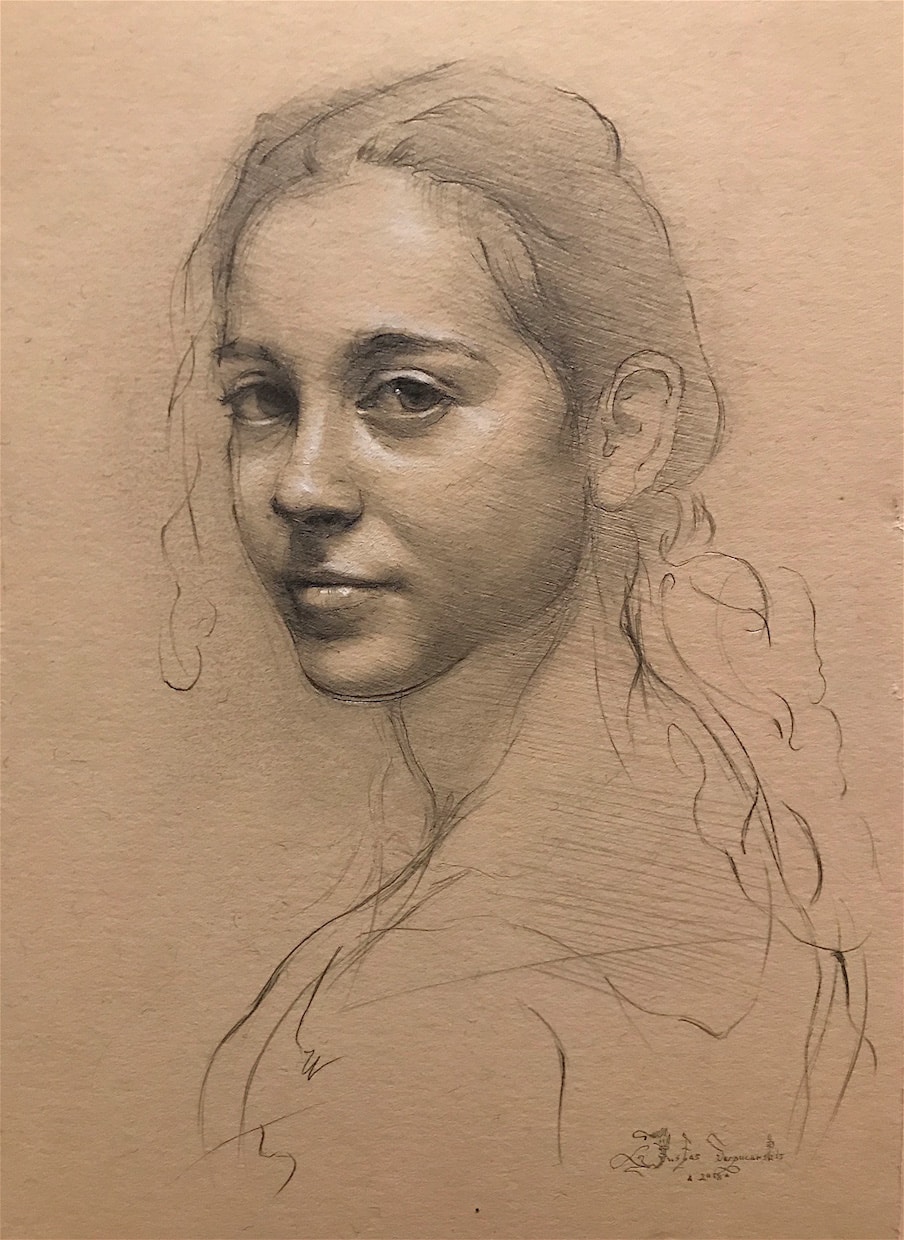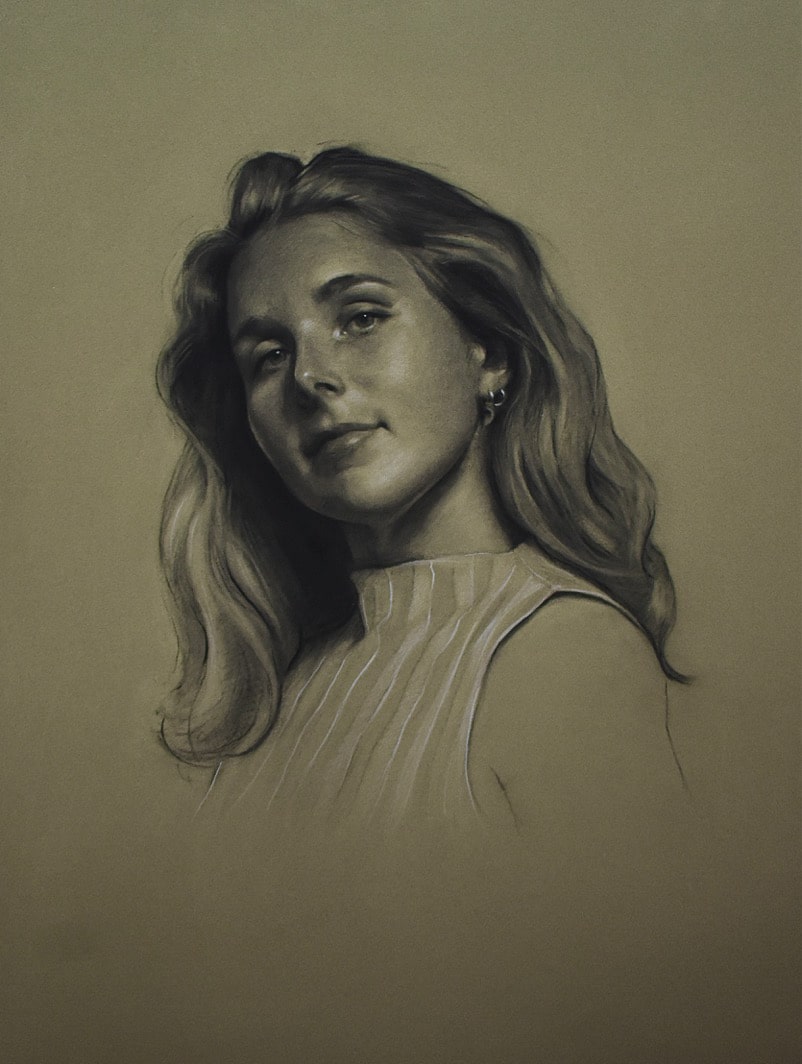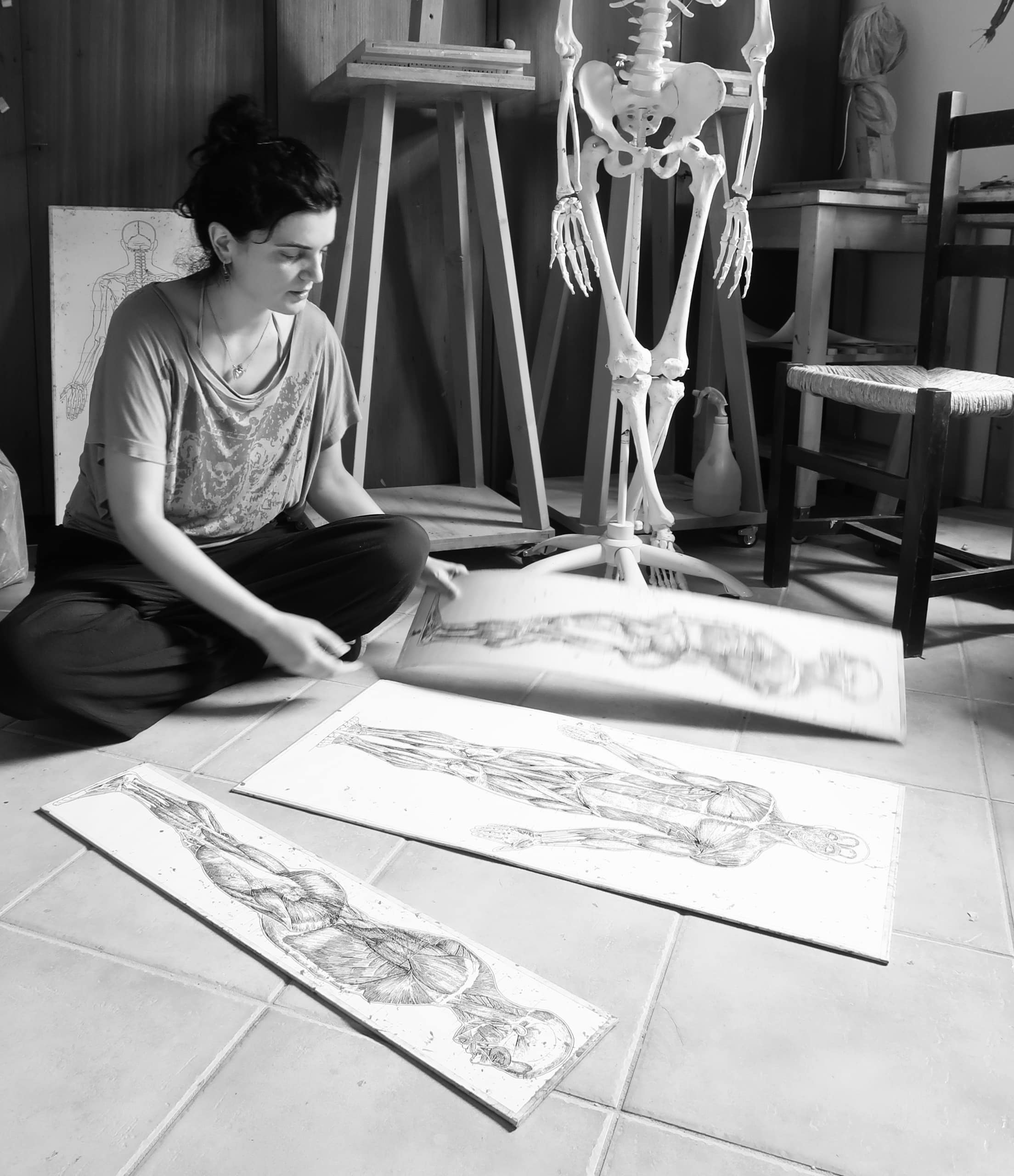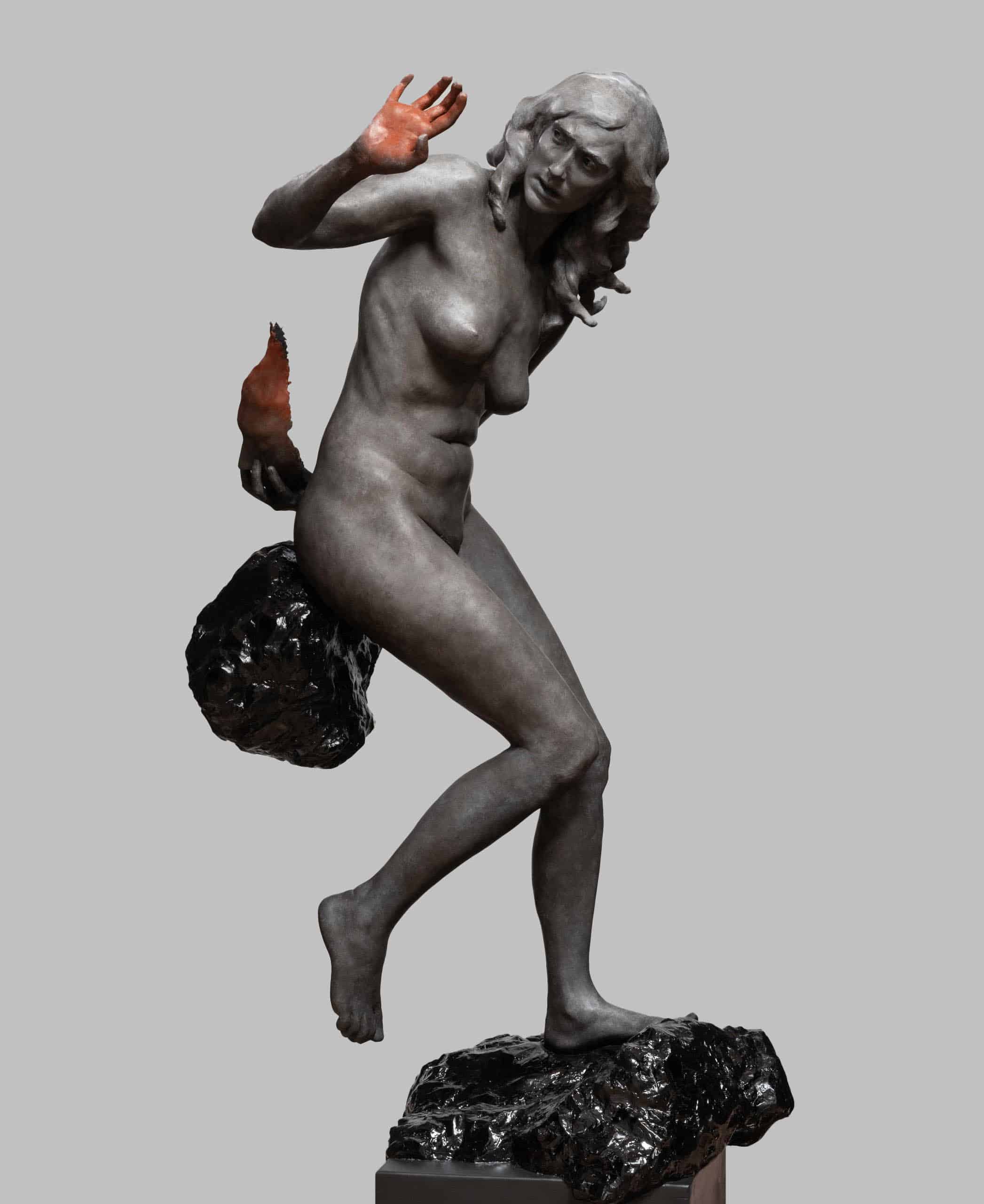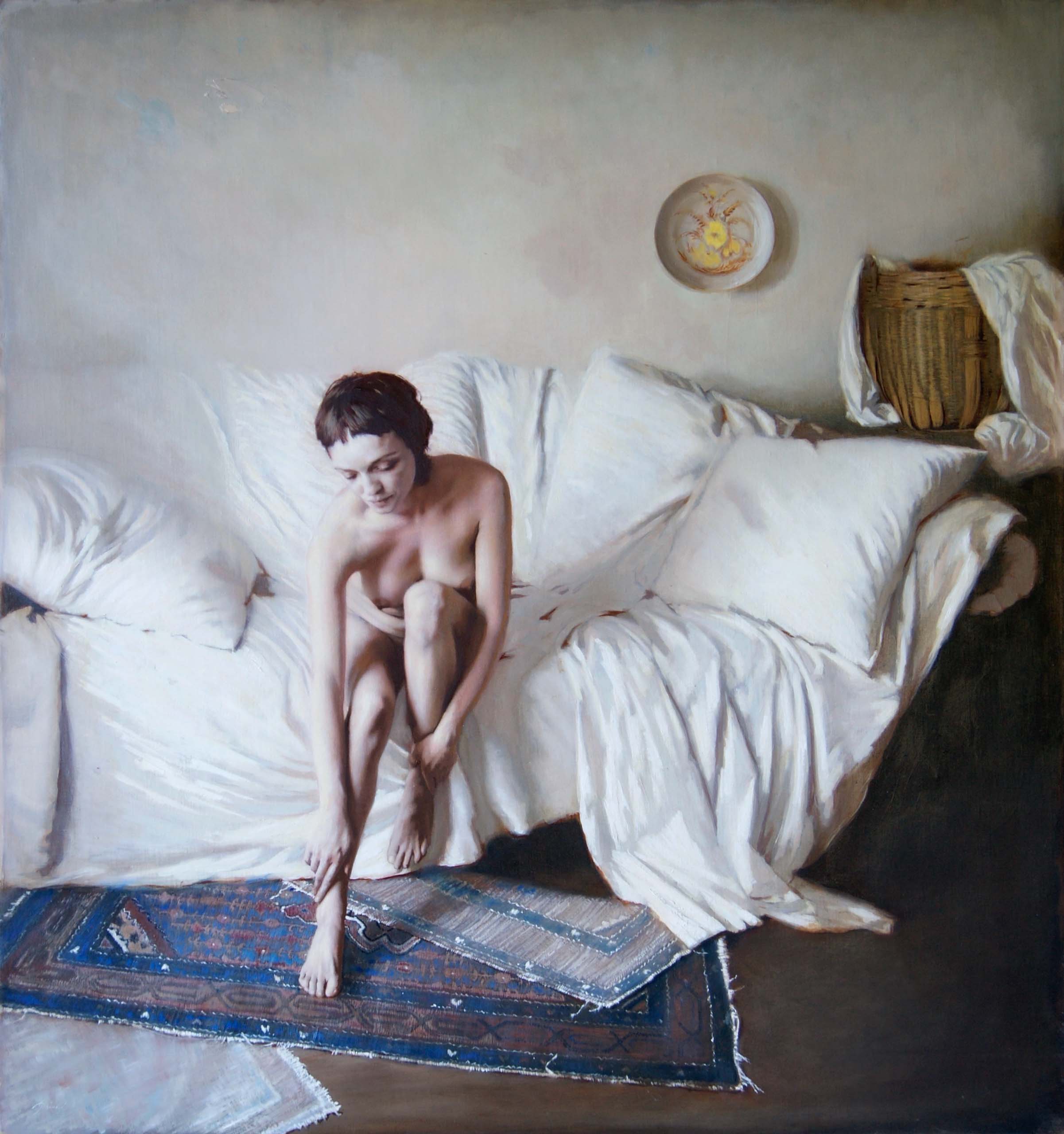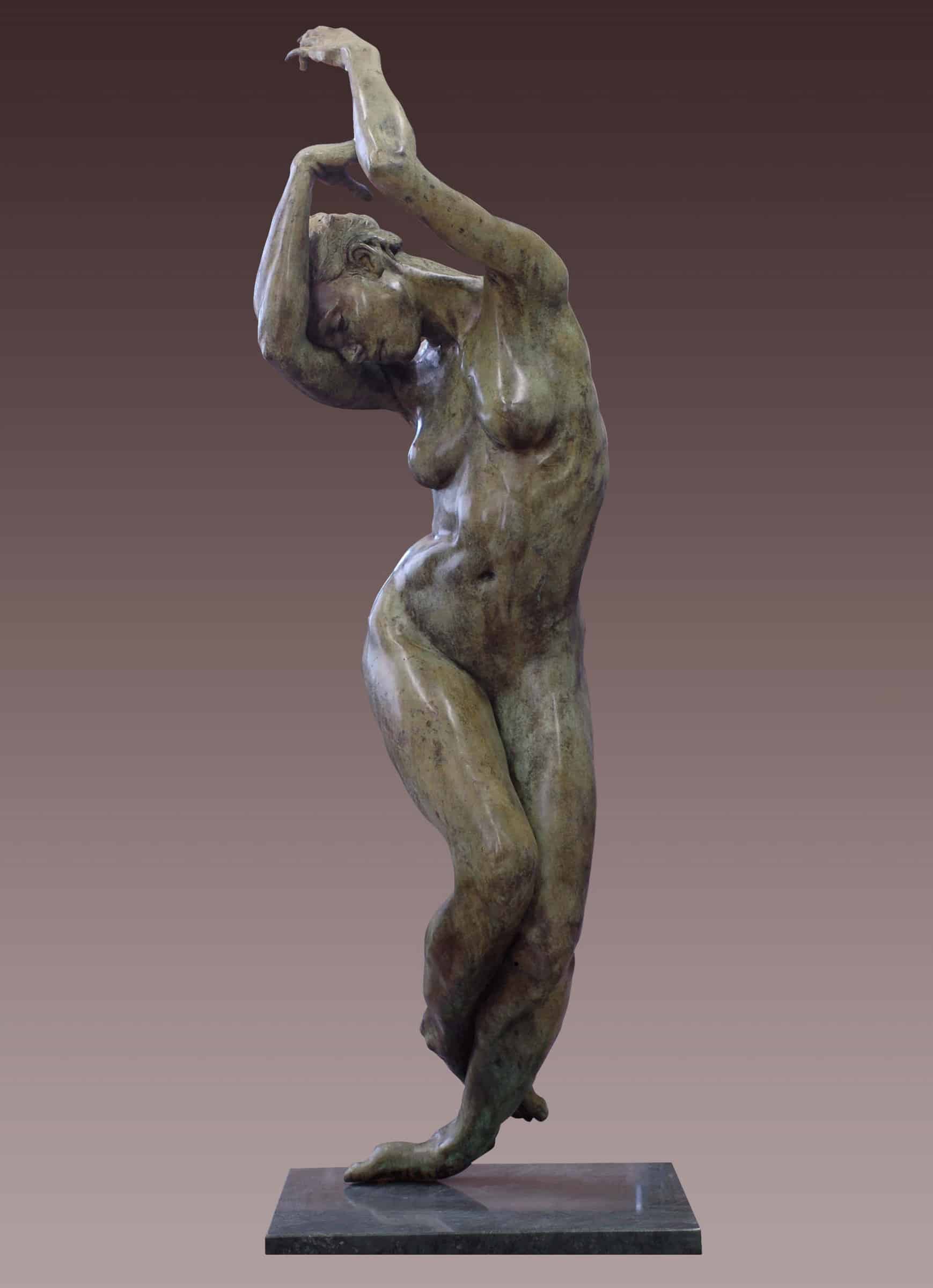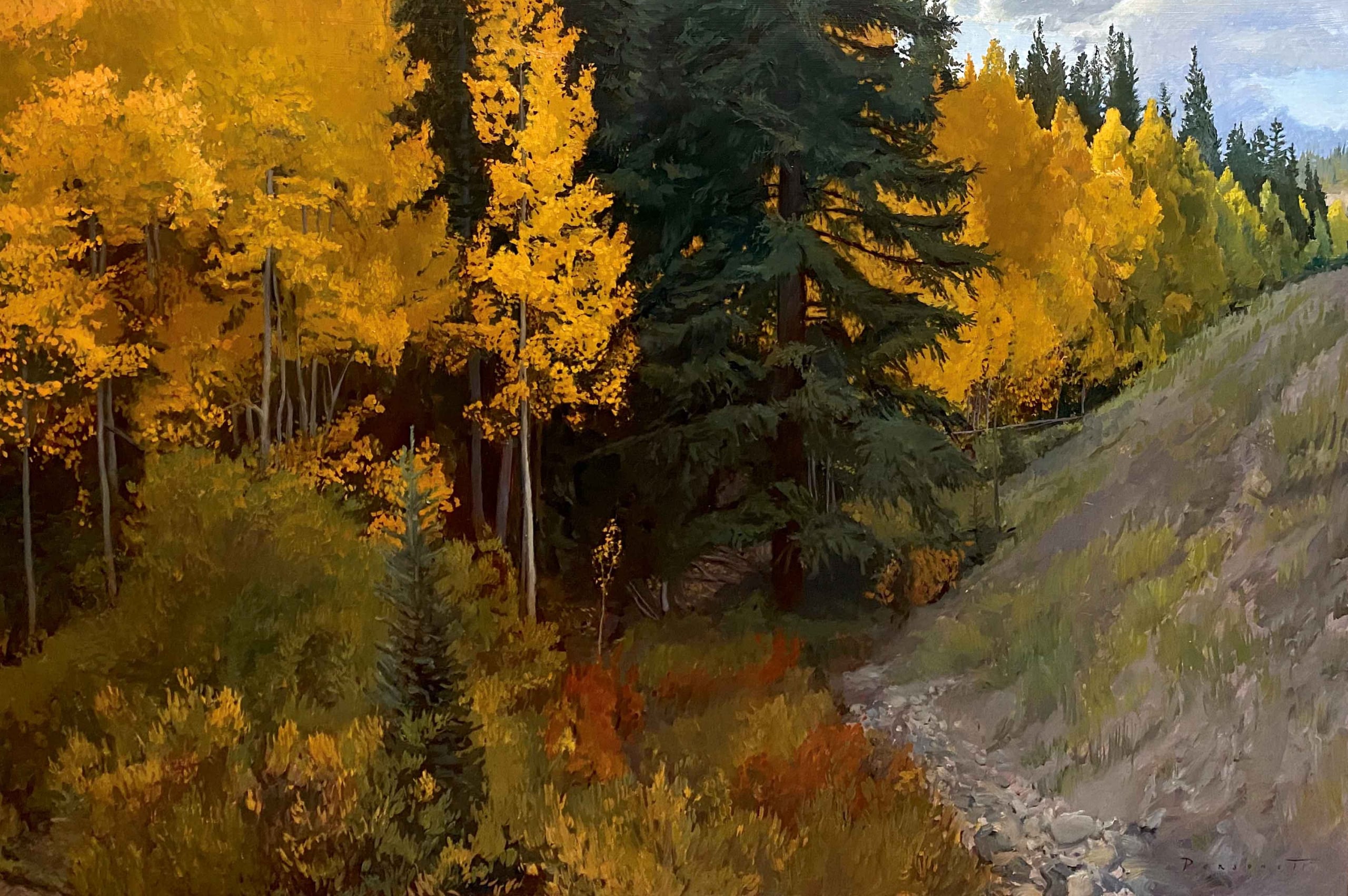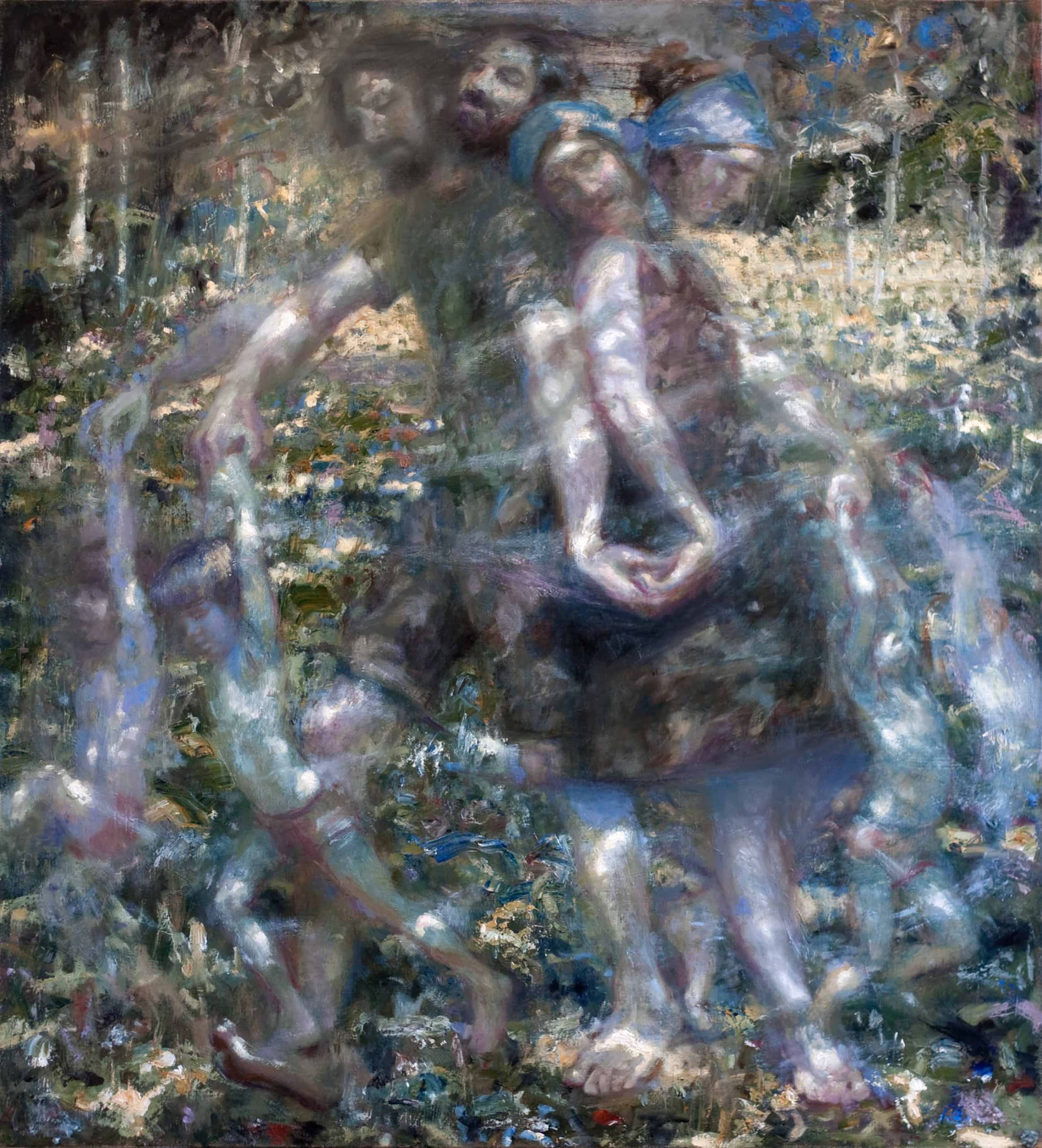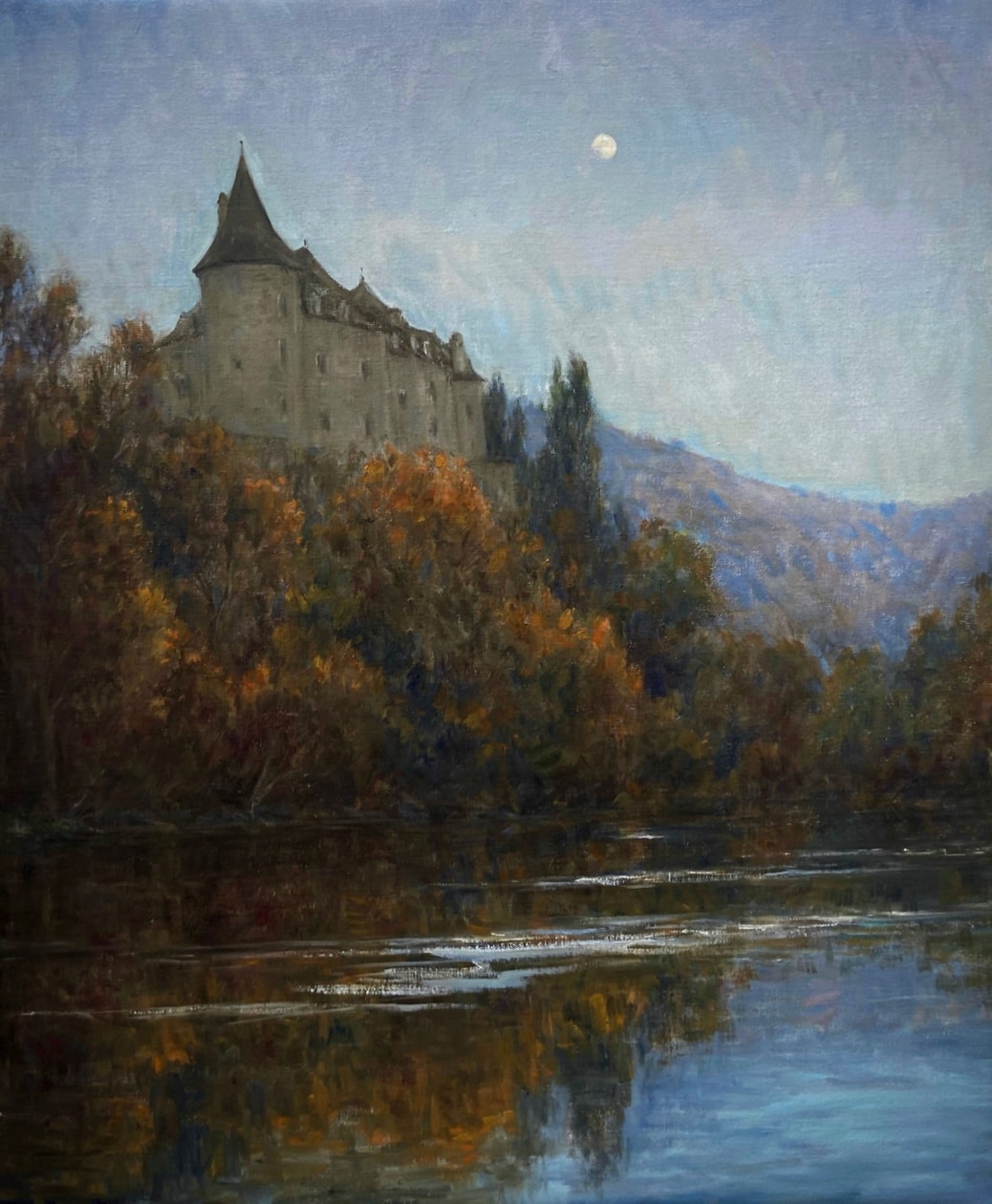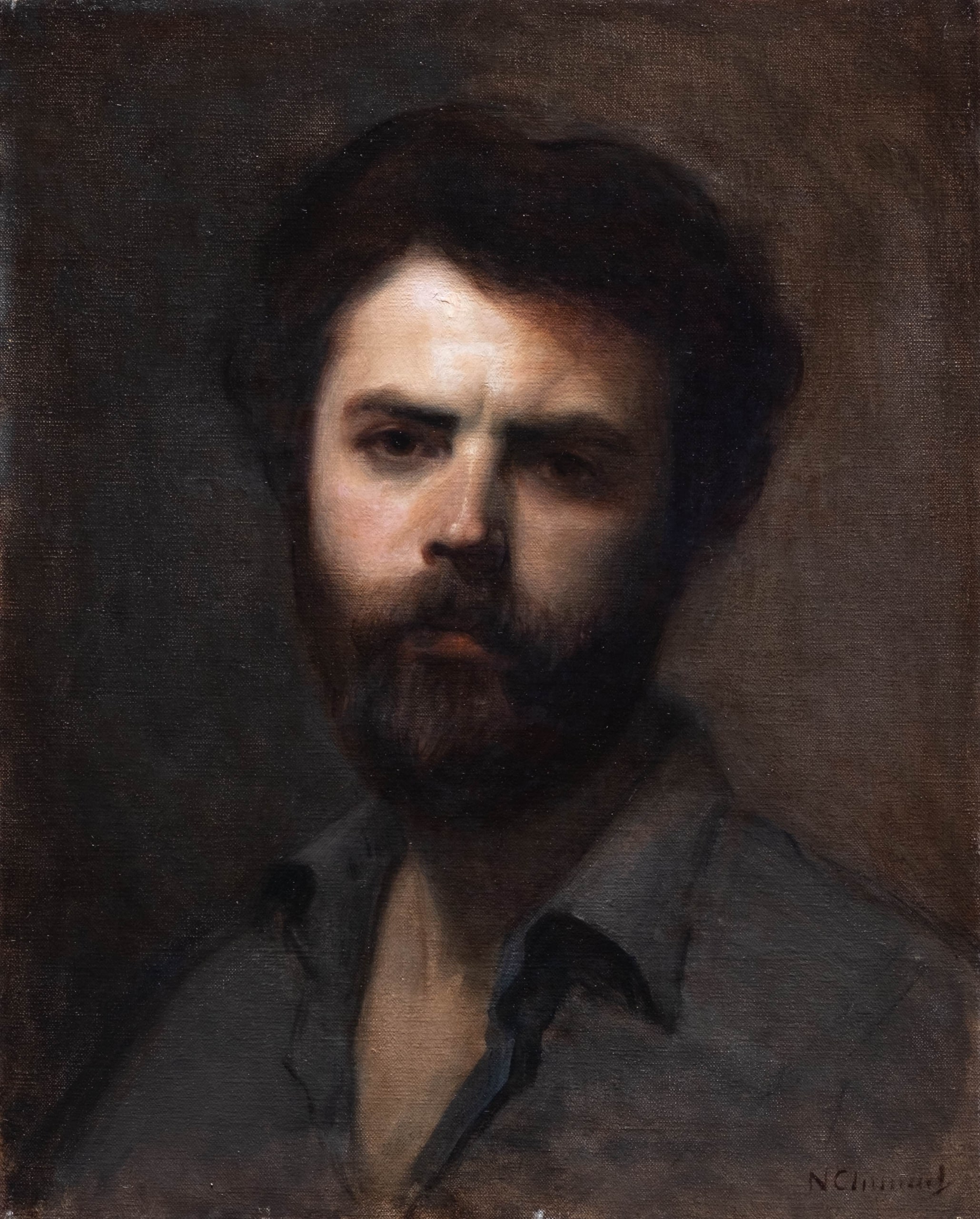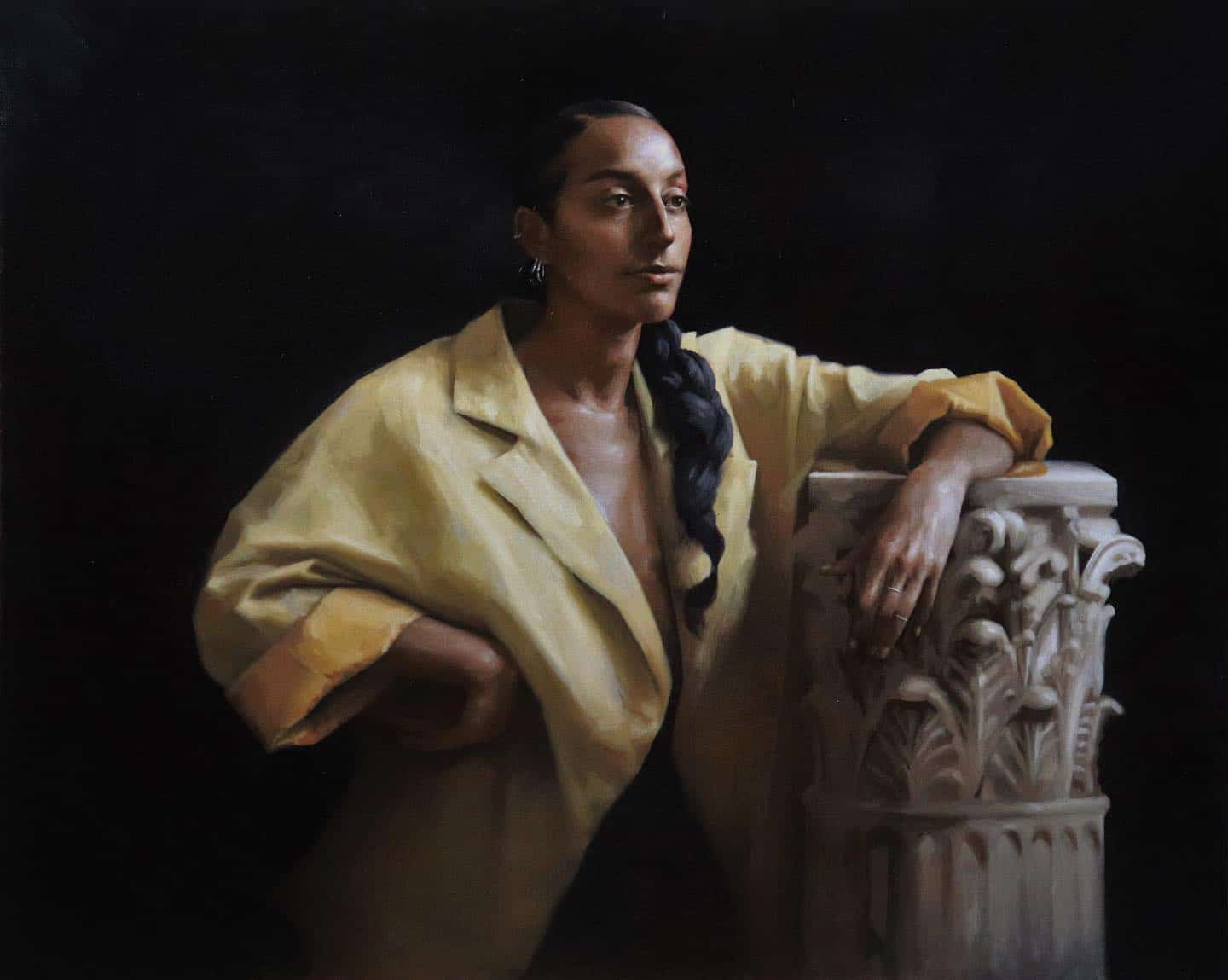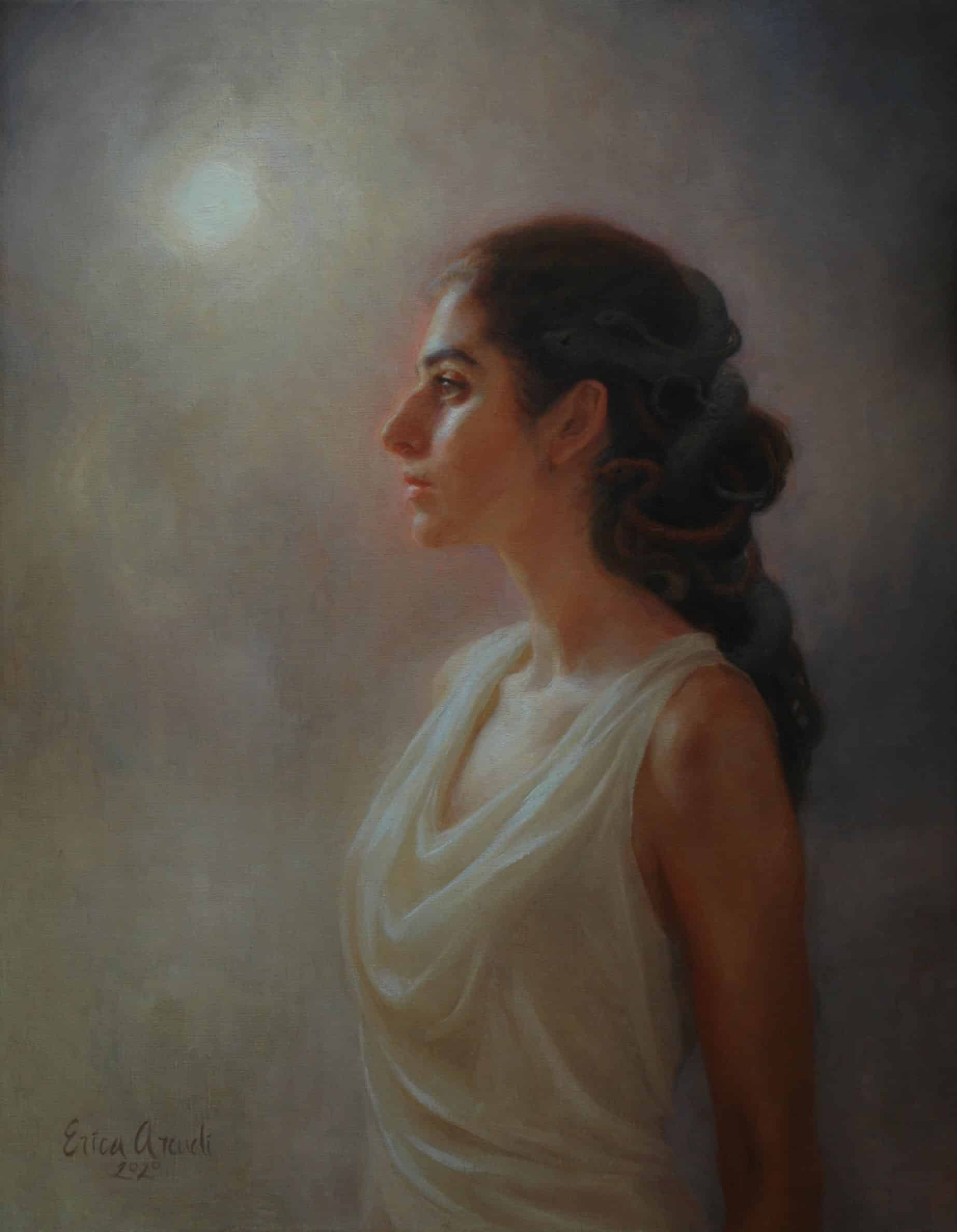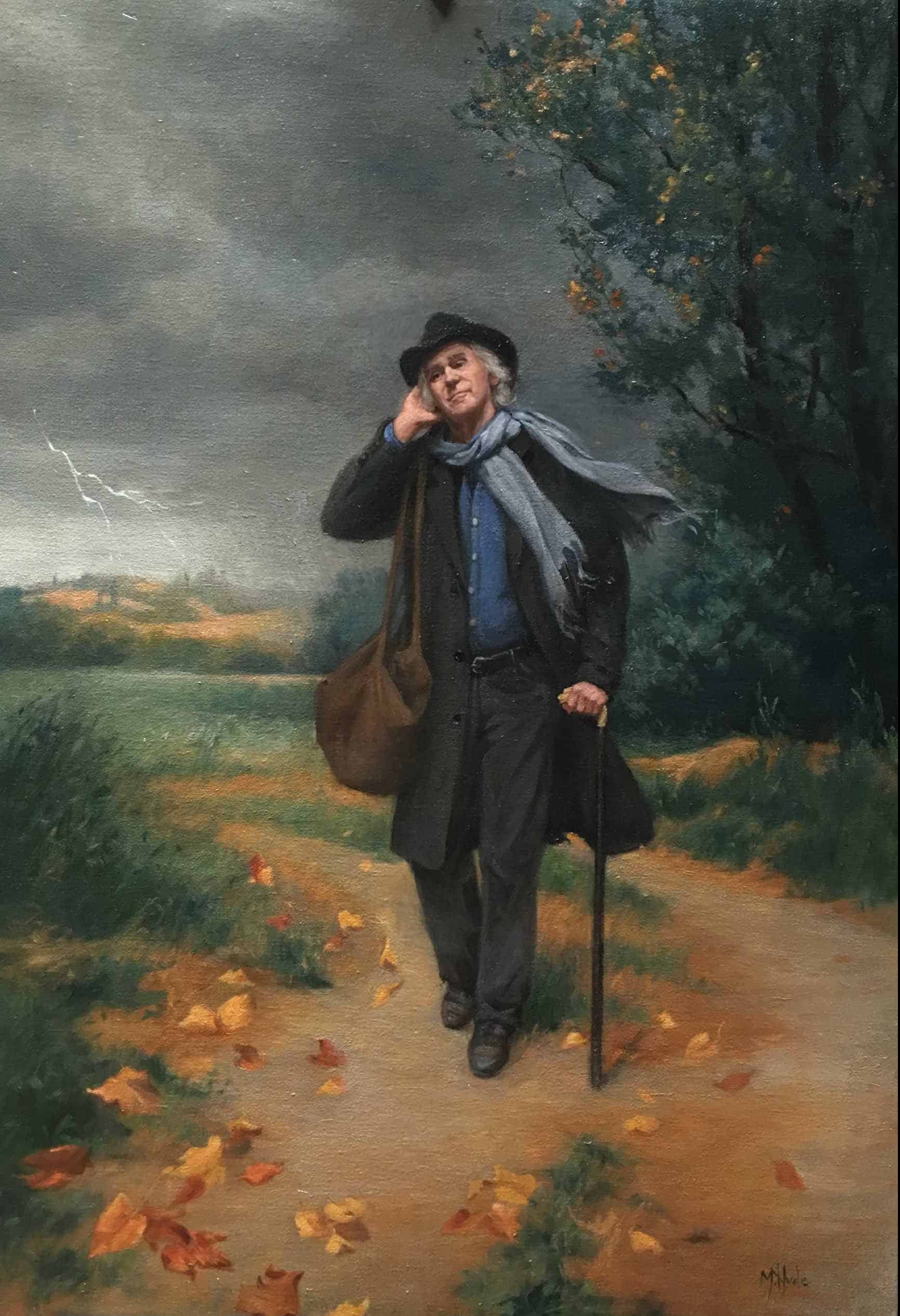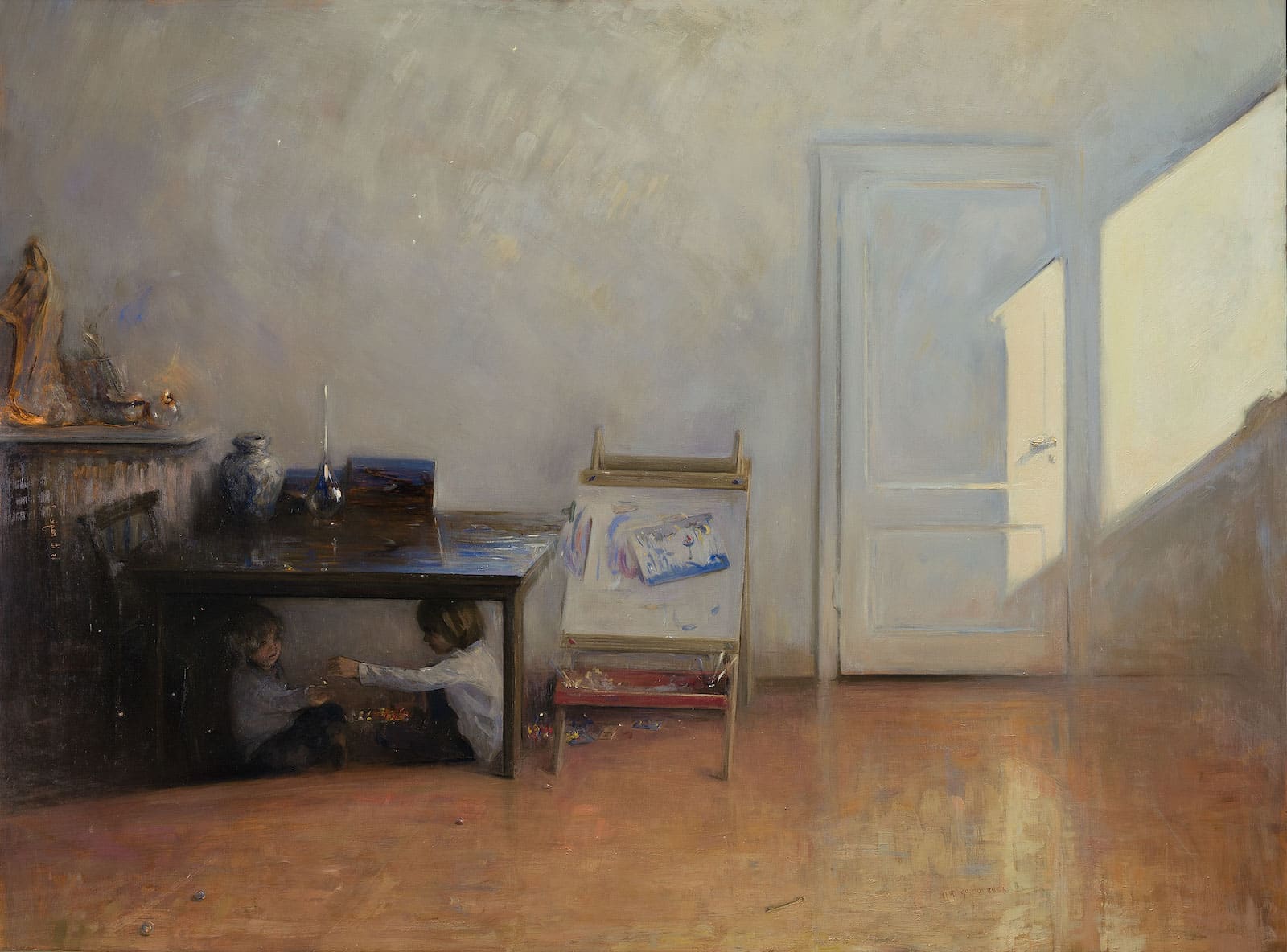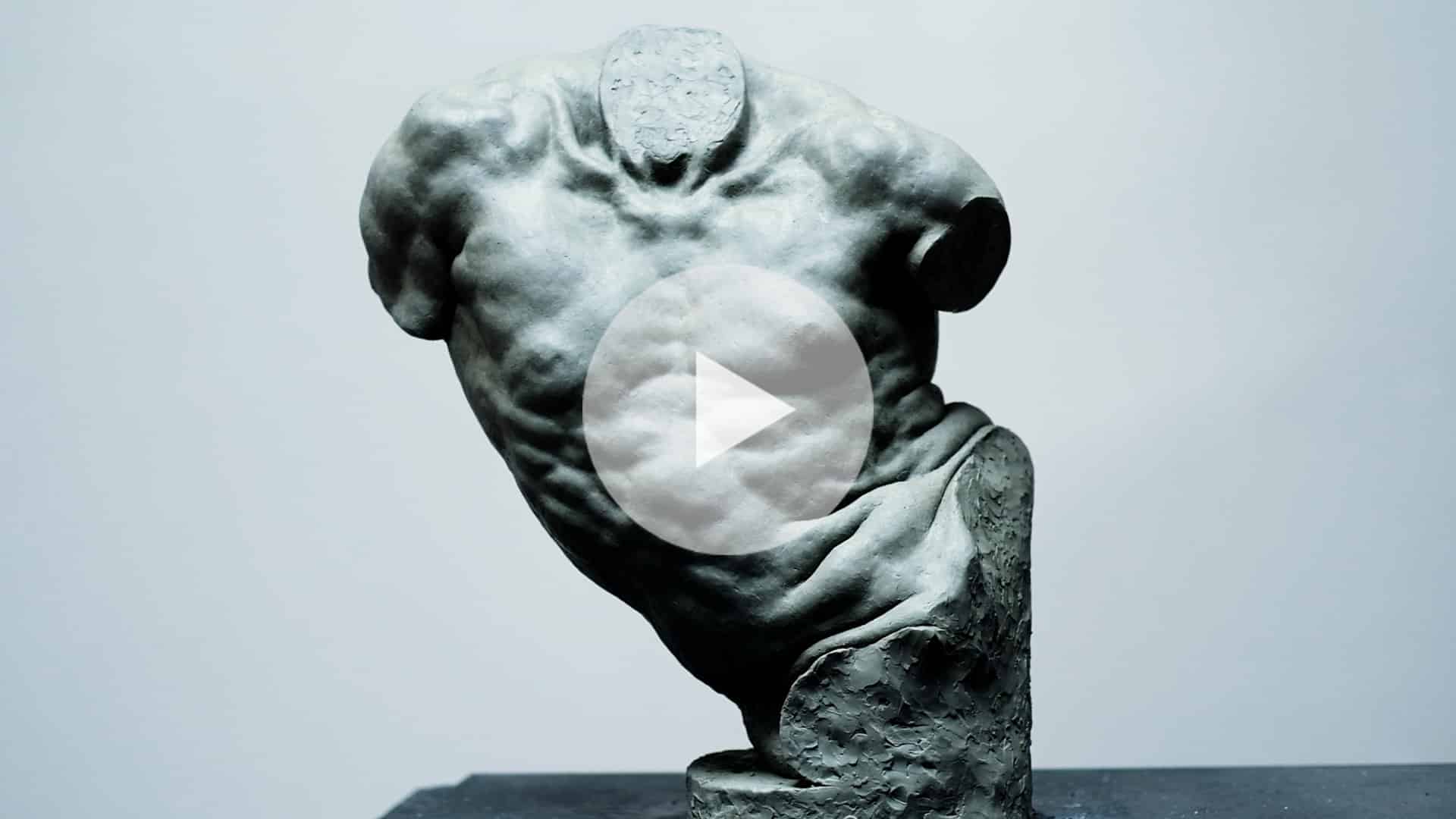September 15, 2023 / Spotlight on Art
Tesoro Mio by
Romer Kitching
Art always comes from art and in the end, many of the ways I set things up can be traced to things I’ve seen.
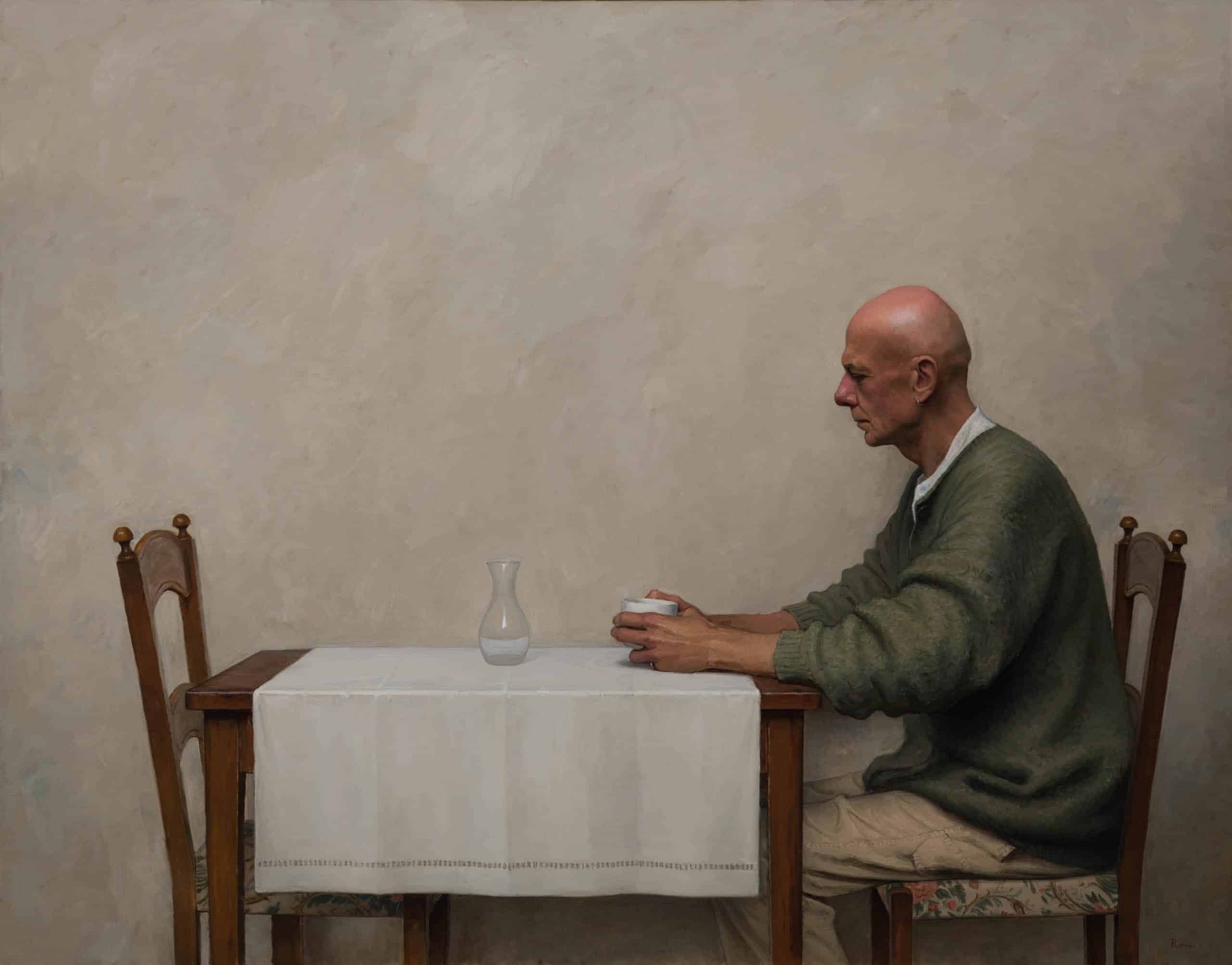
Romer Kitching, “Tesoro Mio”, Oil on canvas, 160 x 125 cm, 2023
After graduating from The Florence Academy of Art in 2018, Romer Kitching moved to Cerét, France to continue painting from life both inside and outside the studio. In the Fall of 2022, Romer was asked to return to the Florence Academy of Art as a special guest instructor, and with his family, Romer moved back to Italy. With his return to Florence and reunion with one of the FAA’s veteran models, Stefano, acting as the catalyst for this piece, Romer planned and painted Tesoro Mio while teaching in the Advanced Painting program. This piece grew from both artist and model through conversations and reflections upon the trials of life — the passing of loved ones, growing apart and missing the people you care about most. What follows is the artist’s explanation of the artwork’s inspiration, process and moving story. We hope you enjoy this unique insight into Tesoro Mio by Romer Kitching!
“The painting is titled Tesoro Mio which is a term of endearment in Italian. It’s a painting about loss, a sort of double portrait with someone missing.
When I returned to Florence to teach in the fall of 2022, I arrived with the intention of making the most of the studio included in my contract. It had been four to five years since I was last there and I was looking forward to being back amongst peers. I wanted to paint something important to mark my time at the school.
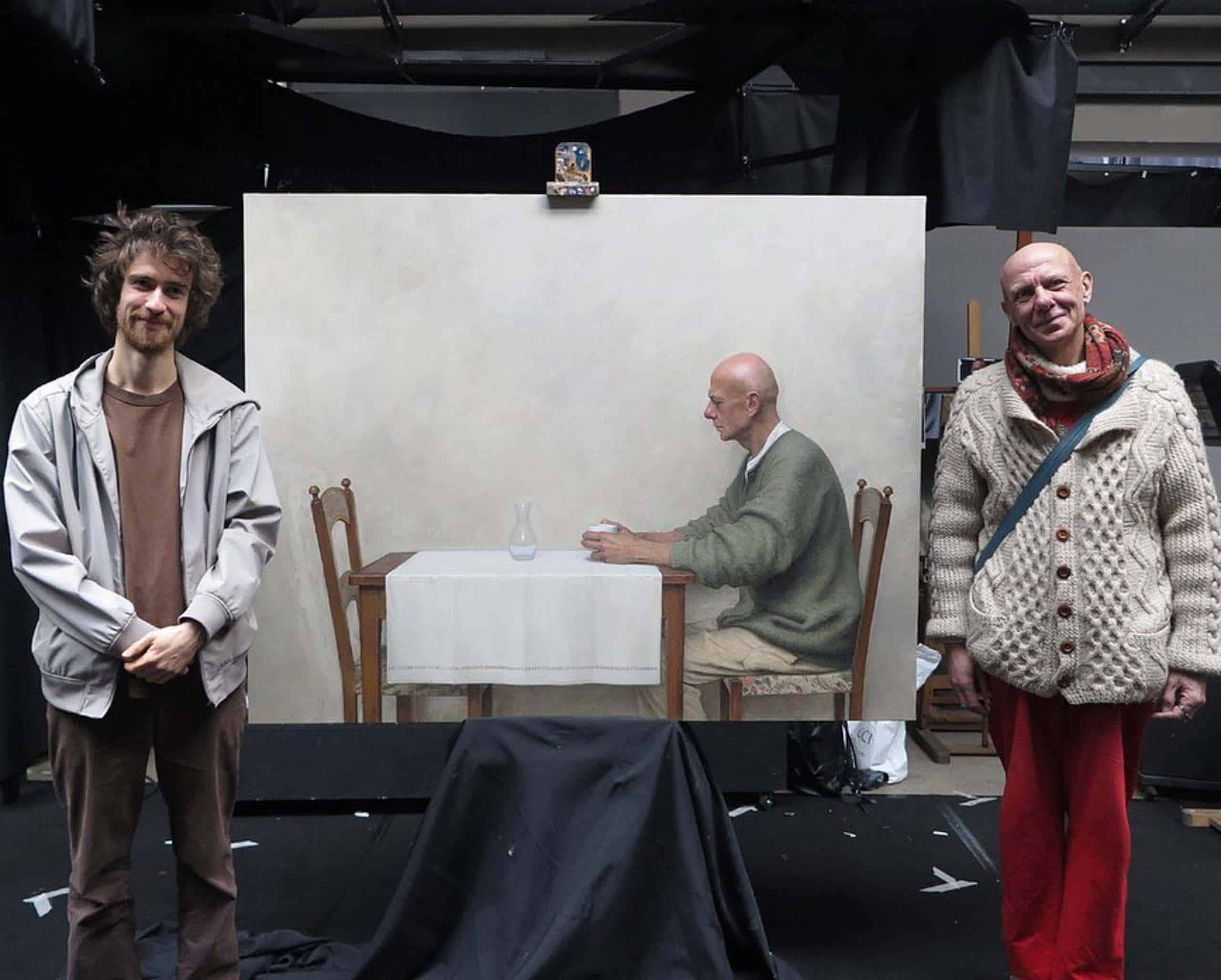
Romer and model, Stefano, posing next to the finished painting
I ran into Stefano in the corridor on my way to lunch. He was one of the first models I drew as a student and had been depicted countless times by many others in charcoal, paint and clay. I had asked him to pose for my final project five years ago, but he couldn’t. He was taking care of his elderly mother who was ill at the time. He told me that she had since died, which was why he was able to pose again.
I knew I wanted to paint him, but I wasn’t sure how. I felt it needed to have meaning for both of us. I kept thinking about his mum and about my own parents and brother, whom I was increasingly estranged from. My wife and daughter had travelled with me but wanted to go back to France and we were anticipating being apart. Then one day at lunchtime I saw Stefano through the window, eating on his own and that image just summed up everything I felt. I began working on a painting in my head.
Stage #5 – Painting the background
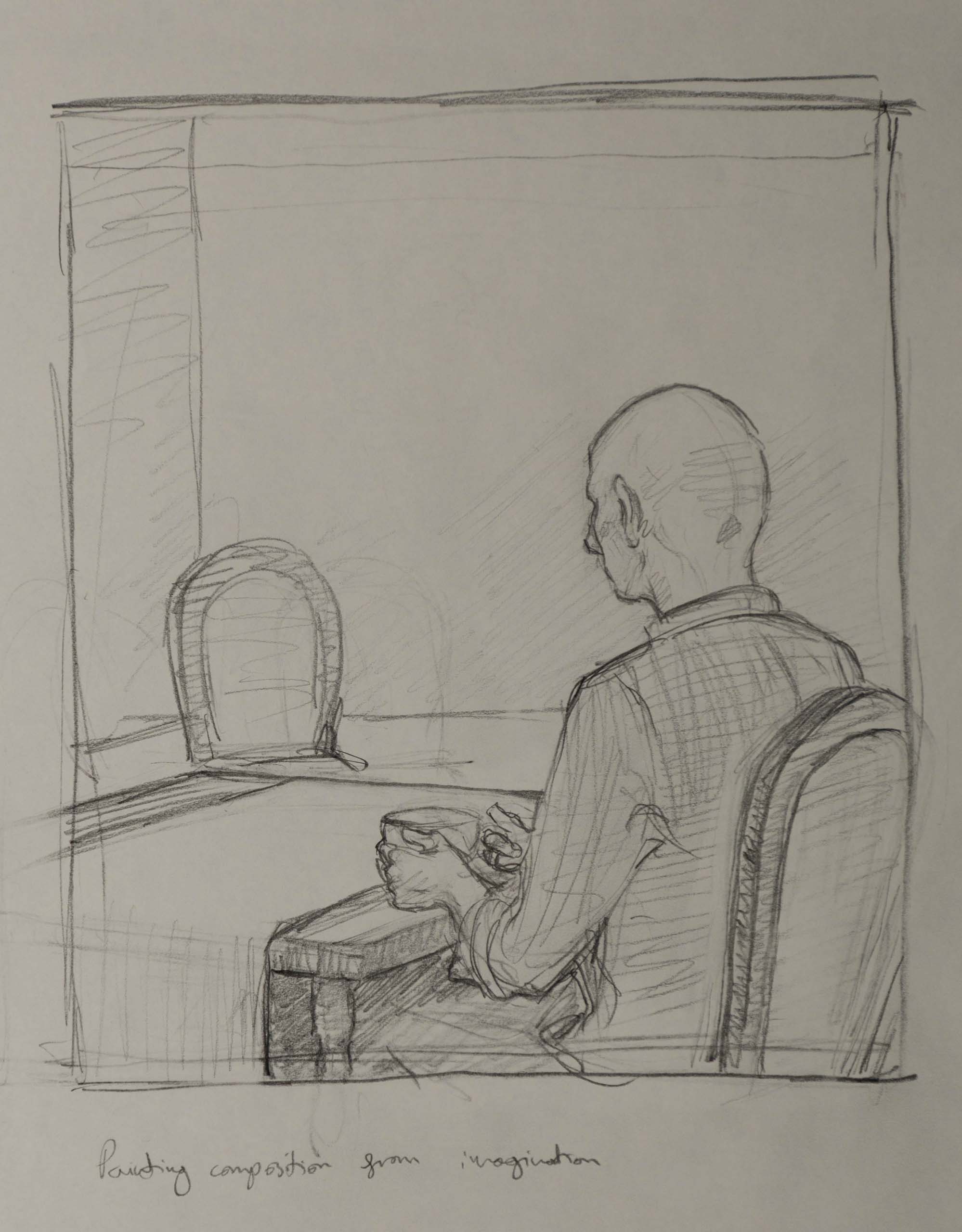
Stage #5 – Painting the background
At first, I had the idea to portray him like this, seen mostly from behind, seated. Slowly the idea evolved and I thought of including an empty chair. I did quite a few sketches from imagination to try things out and I grew increasingly committed to the idea. I started to imagine how the setting would be; I wanted something domestic but bare. The environment needed to suggest that one person was living where there had previously been two. I went all over town looking for a pair of chairs I liked and managed to get my hands on a table from the school.
Dana Zaltzman
“White cloth”
Oil on linen
90 x 80 cm
2020
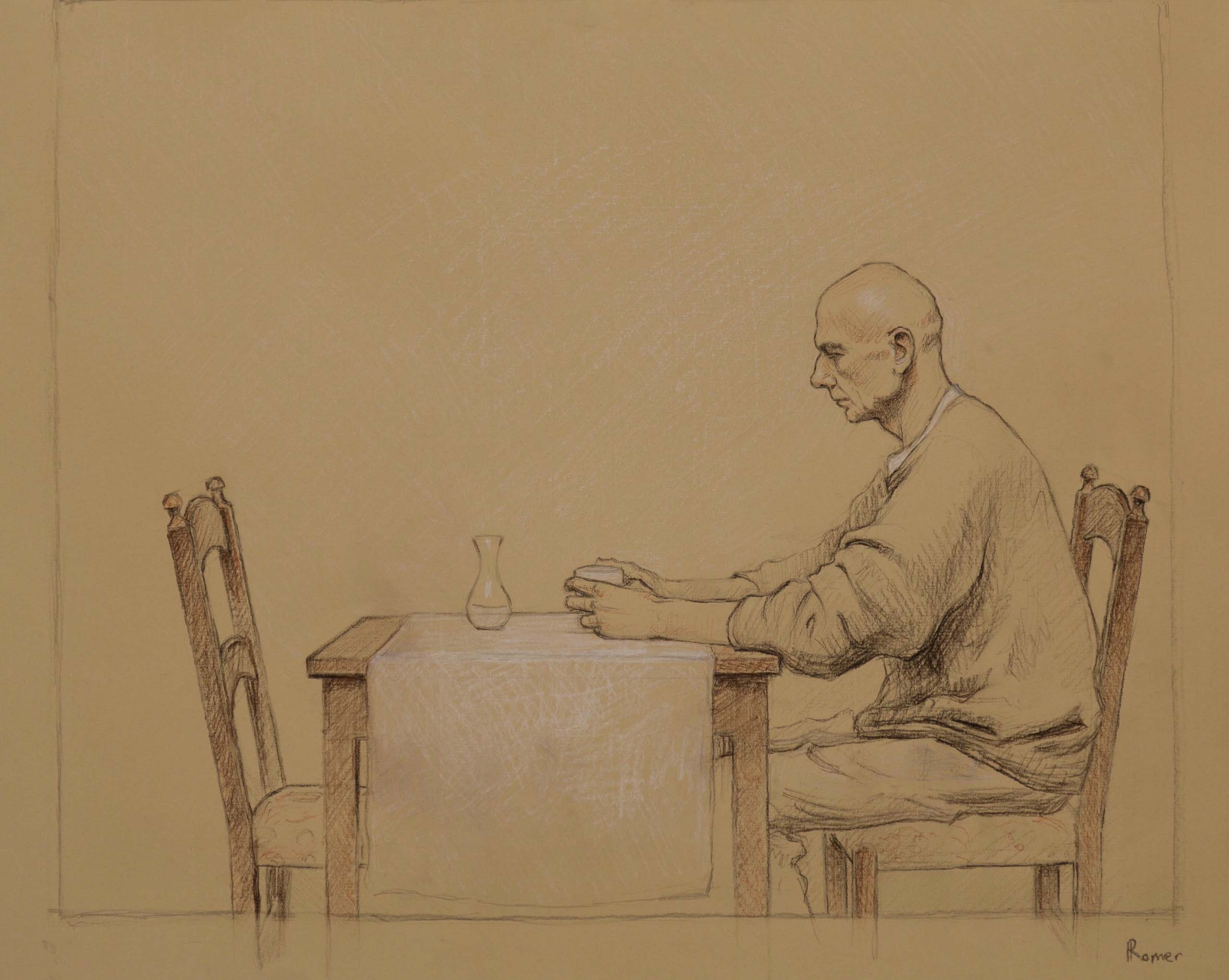
Dana Zaltzman
“White cloth”
Oil on linen
90 x 80 cm
2020
A month before I arrived in Florence, I had become rather obsessed with the work of 20th Century American painter, Andrew Wyeth, who was undoubtedly a major source of inspiration for this painting. Something that fascinates me about him is his ability to paint things that aren’t there. What I mean by this is that he can make an empty space heavy with memory and emotion, often guiding our imagination to finish a story.
Two particular paintings of Wyeth’s, which achieve this wonderfully, spring to mind. The first is “The Kuerners”, 1971, which depicts a couple Wyeth knew well in Pennsylvania. There’s a void of space between them, yet it seems full with the interaction that has just taken place, the tense words just exchanged.
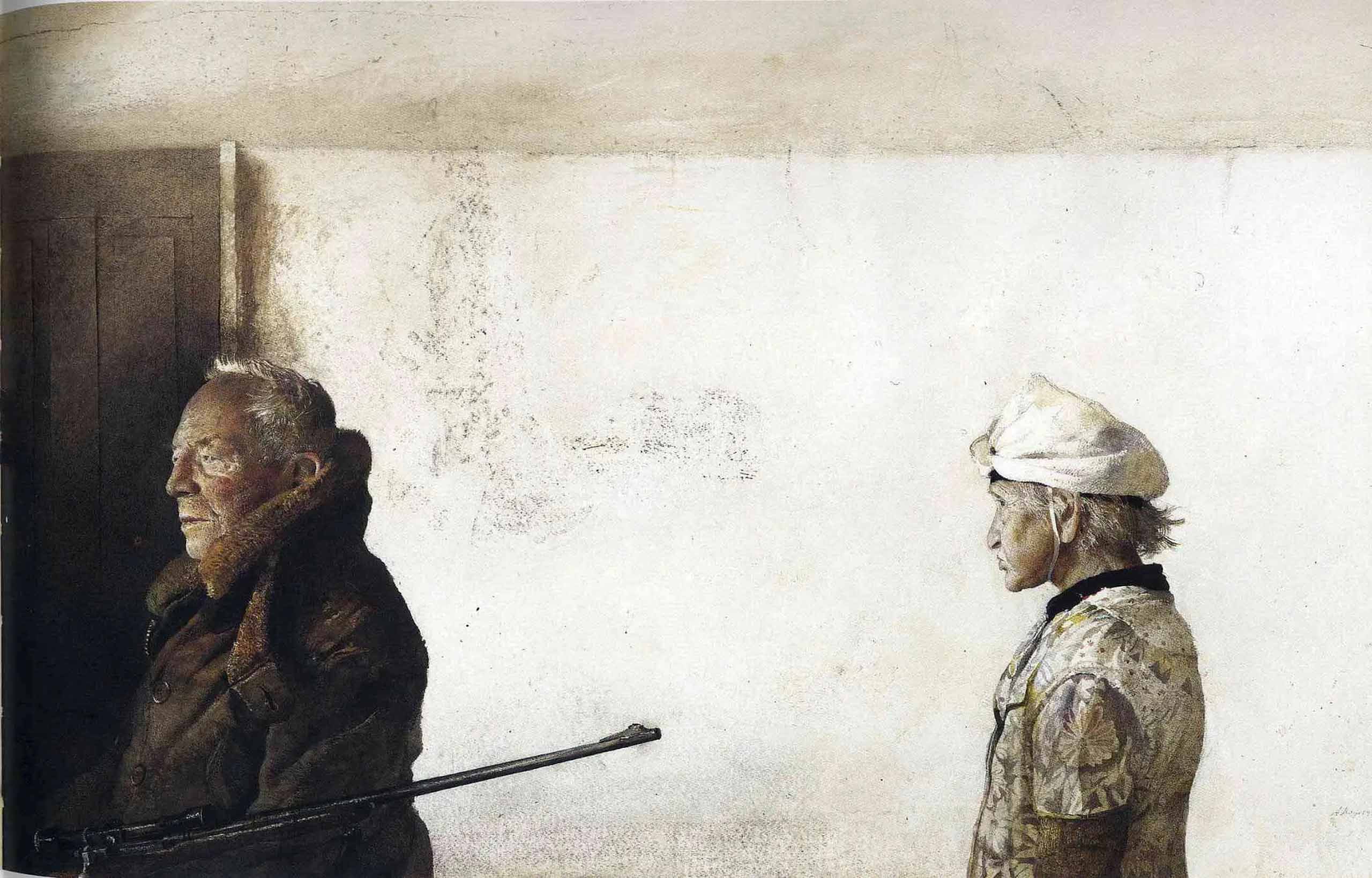
Nelson H. White
“The Poppy field”
Oil on panel
12 x 20 in
2013
The second painting, Groundhog Day is another representation of the Kuerner household, though this time without either of them present. The sunspot on the wall animates the whole scene, whilst the lone knife and the jagged logs outside, (where the perspective changes a fraction) seem to point to the peculiarity, if not the slight madness of the house’s inhabitants.
Nelson H. White
“Mashomack Pt”
Oil on panel
20 x 48 in.
2013
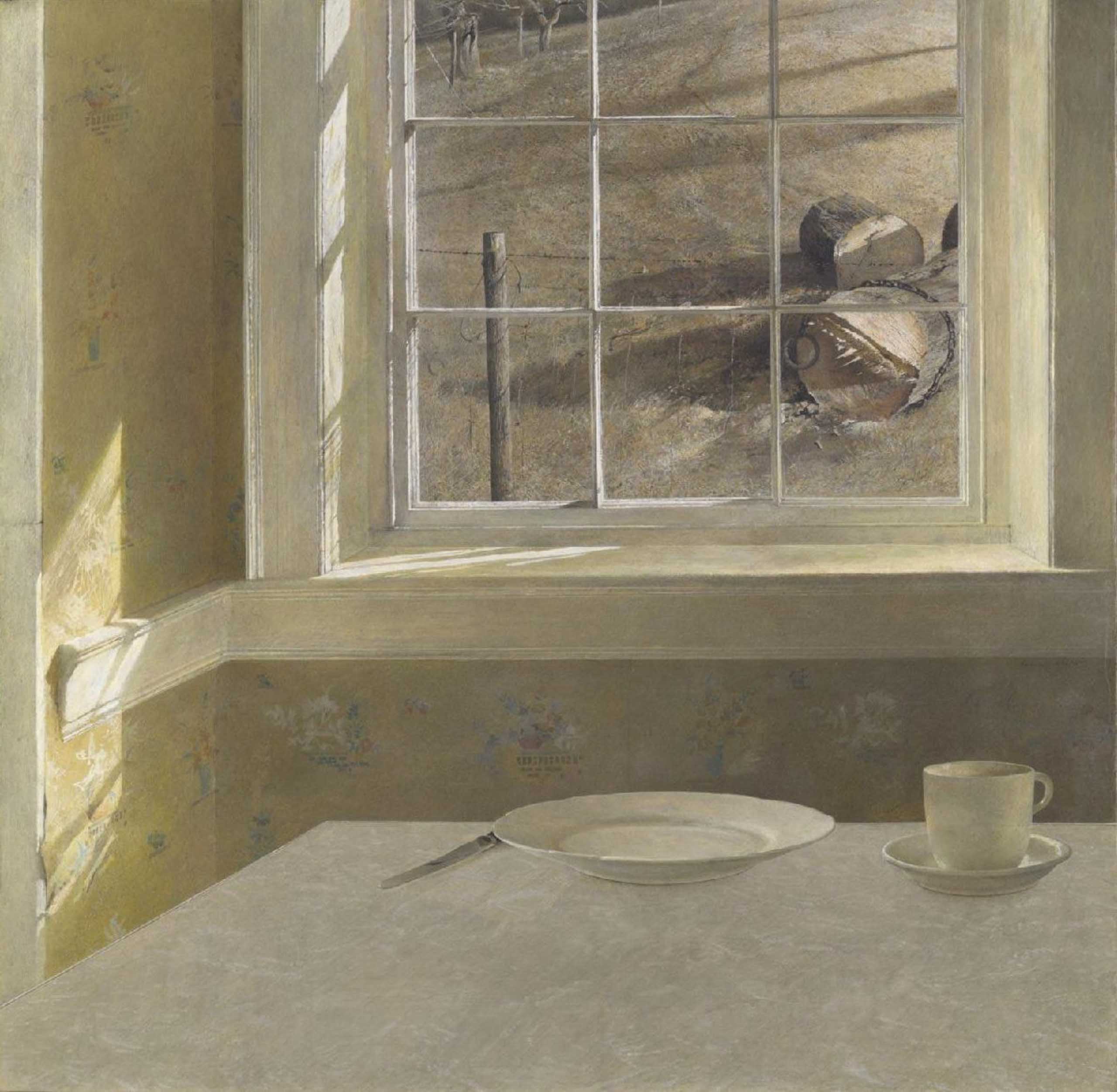
Nelson H. White
“Mashomack Pt”
Oil on panel
20 x 48 in.
2013
I looked at these paintings often as I planned my painting of Stefano. Ideas of presence and absence were constantly in my mind. How could I use a few elements to draw the viewer’s attention to what wasn’t there; the other person in the portrait?
When Stefano came for the first sitting, the studio was set up to feel like a domestic environment and the composition had already been imagined. I knew I wanted a huge empty space around him. We settled on clothing that fit the colour scheme. The baggy sweater had been his mother’s, which fit perfectly with the story.
Dana Zaltzman
“White cloth”
Oil on linen
90 x 80 cm
2020
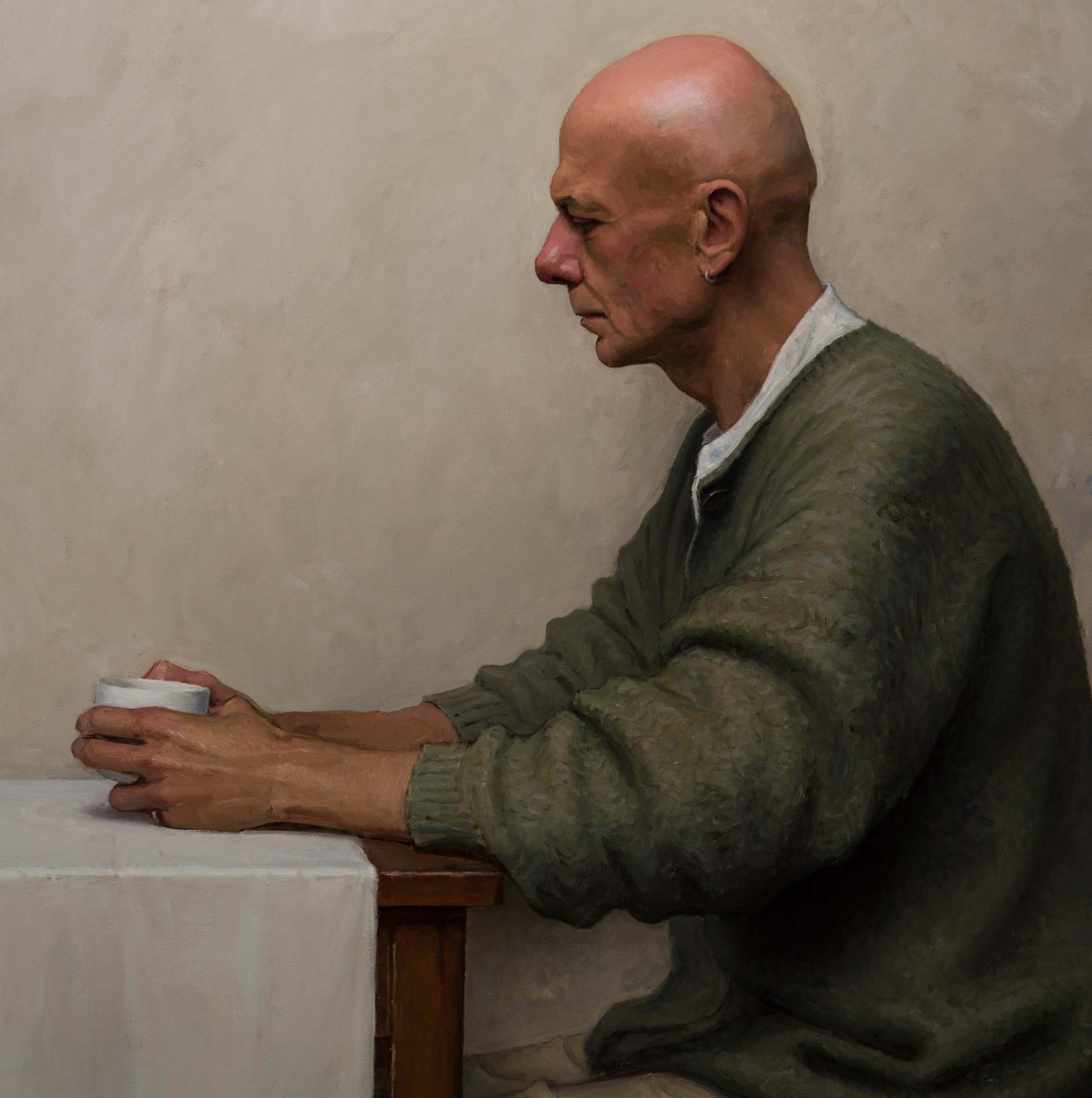
Dana Zaltzman
“White cloth”
Oil on linen
90 x 80 cm
2020
For the pose I may have drawn some inspiration from Van Gogh; art always comes from art and in the end, many of the ways I set things up can be traced to things I’ve seen, just in a new combination with my own contribution added.
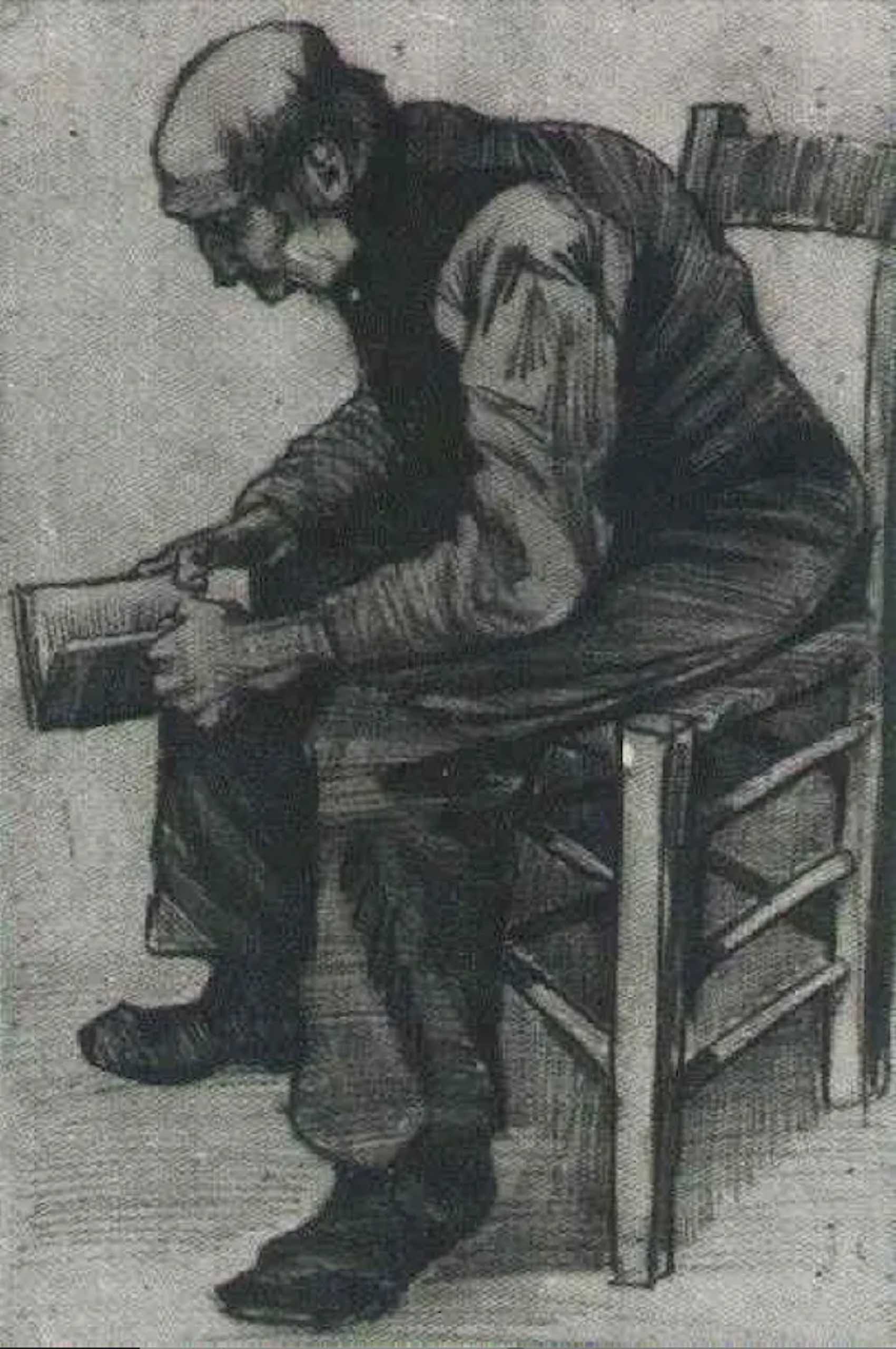
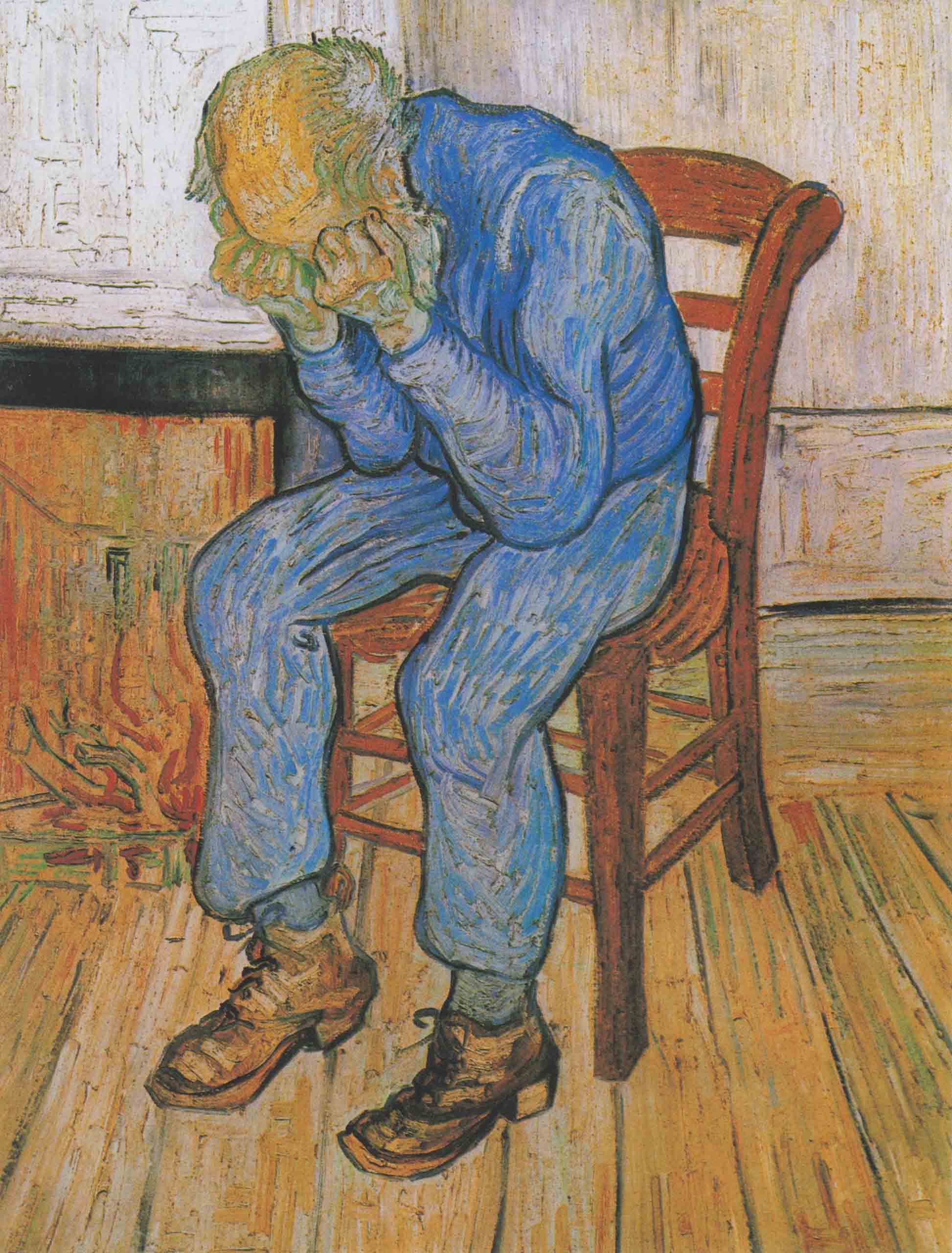
Inspirational paintings: Man, Sitting, Reading a Book, 1882 and At Eternity’s Gate, 1890 by Vincent Van Gogh
I felt he needed something to hold and to fix his gaze on. I wasn’t sure what to put on the table and I eventually decided on an empty vase. It seemed to reinforce the narrative of loss one more time. I could imagine the flowers that might once have filled it. My former teacher, Ramiro, had once told me that the ‘question’ (‘what does it mean?’) should be answered three times in a painting, an idea I often find myself returning to. In this case, I felt that the empty space, the empty chair and the empty vase represented one, two and three.
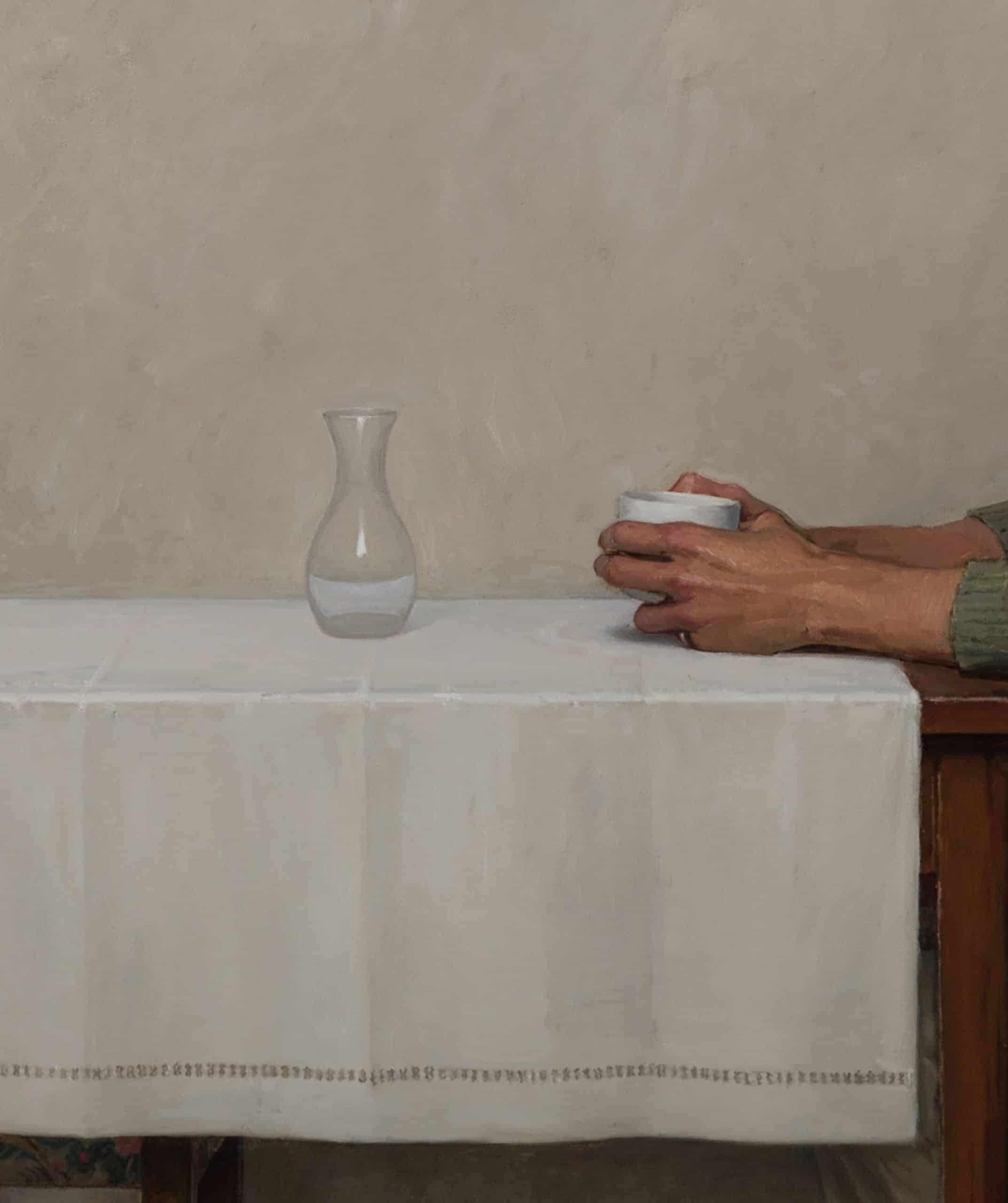
Dana Zaltzman
“Mailbox”
Oil on wood
60 x 50 cm
2018
Stefano and I became friends during the sittings. I learned more and more about him and his life and the stories he told me fed into the painting somehow. Every part of a painting is important and contributes to it psychologically. This lesson has really sunk in since I graduated. The paintings I love most are a great feat of organisation in this sense so that everything supports one theme and one idea. In my view, art is at its most worthwhile when it has something to say. Getting the idea across is a tricky business that usually involves a lot of painstaking editing and reworking.
Most of the time, I live in a small town in the South of France and I paint things around me. I’m increasingly eager to tell stories through my work and, though it only works some of the time, this is the real goal and the reason I paint. Of course, like so many realist painters, I’m also obsessed with technique and I’m always striving to represent my perception of reality convincingly. It is important to remember, however, that technique is best likened to vocabulary. Just as words help us to string together sentences and communicate meaning, so does our ability to paint different things help us to communicate visually.”
– Romer Kitching
More about Romer Kitching
Romer Kitching (b. 1995) is an English oil painter currently living in Céret, France. He began drawing and painting at a young age, though it was not until he travelled to Italy at the age of 19 that he received formal training at the Florence Academy of Art (2015-2018). What he learned in Florence, he continues to apply in his work today, always working directly from life and using a natural light source wherever possible.
After finishing his training, Romer moved to Céret, a town in the south of France with a rich artistic history. A place that he knew since childhood, this town became his home and the centre of his artistic universe. Here he learned to paint outdoors, in nature and in the streets. This added a new dimension to his work, which had previously all been completed in his studio.
Romer sells his work internationally and has had exhibitions in London and the south of France.



